- Skip to primary navigation
- Skip to main content
- Skip to footer

Inspired in Kodiak Tailored Professional Design Built in Alaska
Alaskan aluminum power catamarans, llc.
Specializing in building aluminum, hydrofoil assist, outboard powered catamarans
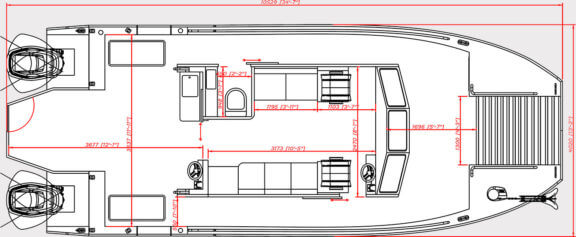
Alaskan Aluminum Power Catamarans specializes in the design and building of aluminum, hydrofoil assist, outboard powered catamarans; producing a welded aluminum boat specifically designed for operating in our rugged Alaskan environment. Each of our boats is influenced by a lifetime Alaskan resident who has spent most of his life both commercially fishing and sport fish guiding around Kodiak. They are designed by an accomplished naval architect specializing in hydrofoil assist catamarans, and each boat is built here in Alaska by a team well versed in fabricating within Alaska’s Commercial Fishing and Sport Boating industry.
The catamaran-style hull is well known for its stability, extra width, and fuel efficiency. However, the asymmetrical hulls on our boats recognize that the water inside a catamaran’s tunnel is different from the water displaced on the outboard sides of the boat when underway. This design helps to further improve on the catamaran idea; preparing for and mitigating chop entering the tunnel for a smoother ride at speed, as well as minimizing drag, increasing fuel efficiency, and range.
Our hydrofoil further improves that catamaran concept and acts like an airplane wing securely fixed between the hulls, providing several inches of lift to the entire boat on plane. Lifting the boat reduces the wetted surface, thereby reducing drag, increasing fuel efficiency, speed, and range. Lifting the boat also increases the distance between the water’s surface and tunnel, further softening and improving the ride in chop. Our hydrofoils are designed and placed to maximize lift at practical cruising speeds and anticipate a variety of load conditions.
Cabin and deck layout are easily customizable and easily tailored to suit your specific tastes and goals for your vessel. We are very happy to work with you and include our own personal experiences and suggestions as we help to create your ideal platform; whether you are a charter captain looking for a layout specific to your clients needs, a remote cabin owner interested in hauling material and supplies, or any normal Alaskan looking to take family and friends out for a day or week of fun. These decisions aren’t new to us and we enjoy helping tailor this technology to your application.
PO Box 888 Kodiak, AK 99615 Phone: (907) 891-8534 MyBoat@AlaskanCatamarans.com Facebook Instagram

- StellarCAT AL2002
- StellarCAT AL2502
- StellarCAT AL2503
- StellarSF 2603
- StellarEXP MODELS
- CONSTRUCTION
- AL2502 Gallery
- AL2503 Gallery
- SF 2603 Gallery
- STELLARCAT ALUMINIUM POWER CATAMARANS Stronger • Lighter • Safer
StellarCAT All-Metal Power Catamarans
Why stellarcat .
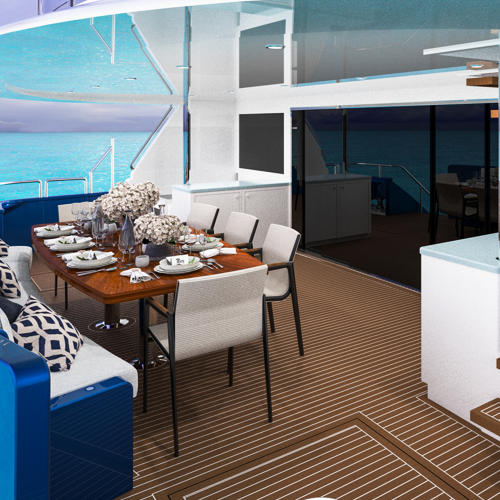
Normal 0 false false false EN-GB X-NONE X-NONE /* Style Definitions */ table.MsoNormalTable {mso-style-name:"Table Normal"; mso-tstyle-rowband-size:0; mso-tstyle-colband-size:0; mso-style-noshow:yes; mso-style-priority:99; mso-style-parent:""; mso-padding-alt:0cm 5.4pt 0cm 5.4pt; mso-para-margin:0cm; mso-pagination:widow-orphan; font-size:10.0pt; font-family:"Times New Roman",serif;} Ultra wide-beam aft cockpit
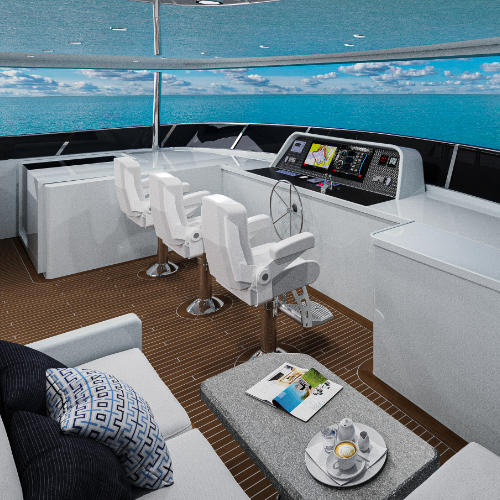
Normal 0 false false false EN-GB X-NONE X-NONE /* Style Definitions */ table.MsoNormalTable {mso-style-name:"Table Normal"; mso-tstyle-rowband-size:0; mso-tstyle-colband-size:0; mso-style-noshow:yes; mso-style-priority:99; mso-style-parent:""; mso-padding-alt:0cm 5.4pt 0cm 5.4pt; mso-para-margin:0cm; mso-pagination:widow-orphan; font-size:10.0pt; font-family:"Times New Roman",serif;} 360° visibility main helm station for safety

Normal 0 false false false EN-GB X-NONE X-NONE /* Style Definitions */ table.MsoNormalTable {mso-style-name:"Table Normal"; mso-tstyle-rowband-size:0; mso-tstyle-colband-size:0; mso-style-noshow:yes; mso-style-priority:99; mso-style-parent:""; mso-padding-alt:0cm 5.4pt 0cm 5.4pt; mso-para-margin:0cm; mso-pagination:widow-orphan; font-size:10.0pt; font-family:"Times New Roman",serif;} On the water fun

Normal 0 false false false EN-GB X-NONE X-NONE /* Style Definitions */ table.MsoNormalTable {mso-style-name:"Table Normal"; mso-tstyle-rowband-size:0; mso-tstyle-colband-size:0; mso-style-noshow:yes; mso-style-priority:99; mso-style-parent:""; mso-padding-alt:0cm 5.4pt 0cm 5.4pt; mso-para-margin:0cm; mso-pagination:widow-orphan; font-size:10.0pt; font-family:"Times New Roman",serif;} Phenomenal deck space
The stellarcat family, privacy overview.
Catmar Explorer® 55 Power
An ideal ocean-going explorer power catamaran for worldwide blue water cruising and circumnavigation.
The hulls, deck, deckhouse and the entire structure are made of certified aluminium. Safe, strong, reliable and robust!
The result is a stable, homogeneous and torsion-resistant structure without the annoying creaking noises that can occur with GRP constructions or mixed forms - such as hulls made of aluminium, deck and superstructure made of GRP - in rough seas.
Catamaris ® is committed to environmental friendliness and sustainability. Numerous building components can be recycled and reused in an environmentally friendly way, see below.Built in our shipyard in Holland.
Description
Perfectly designed for a small crew, e.g. for a couple, even with children or occasional guests.
The flybridge with 30 sqm offers space for relaxing and dining and an outside steering position. For bad weather, the comfortable inside steering position is a safe place. Also available in a well thought out layout for wheelchair users.
The yacht is built from class 5083 H 321/H111 aluminum, which is certified by "Germanischer Lloyd, Bureau Veritas or Lloyd's Register". Our Explorer catamarans are equipped with bow reinforcements and crash boxes with watertight bulkheads. More about the advantages of aluminium .
Strong highly effective foam insulation throughout the interior provides protection against heat and cold and contributes to a pleasant interior climate.
Available with conventional diesel engines or with the innovative electric hybrid system "Green Eco Power Supply".
With the optional extra fuel tanks, transatlantic range is possible at Eco-Speed.
At 174.20 sqm, the Catmar Explorer 55 Power offers particularly large living/usable areas. Headroom in the saloon 2.10 m, in the hulls 2.05 m. CE Certification Category A with 12 persons.
Optionally available reinforcements, approx. 30 cm above and below each of the 4 waterlines, provide increased protection against containers, flotsam and ice in Arctic waters.
Design according to your preferences
The design of the Catmar Explorer 55 Power can be customised to your individual requirements in terms of the flybridge design, the number, layout and design of the cabins, the saloon, the interior fittings, the furnishings, ceilings and walls as well as the entire technical equipment.
Alternatively, a completely new "full custom" design is also possible according to your preferences and ideas.
The designing and construction costs are comparable to those of some semi-custom manufacturers. However, with Catamaris® there are no restrictions on the realisation of your ideas and desires thanks to the "full-custom" construction method.
In the final result, every customer gets his Catmar Explorer® catamaran exactly as he wants it!
Manufacturing your yacht
Under the constant supervision of Catamaris®, your CATMAR EXPLORER 55 Power catamaran will be built at our partner Dijkstra Jachtbouw B.V. shipyard in Harlingen on the Wadden Sea in Holland, which has many years of experience in building multihulls. Dijkstra is certified by "Germanischer Lloyd" and "Bureau Veritas" and has already built more than 180 aluminium catamaran yachts and commercial vessels.
Technical Specifications
Side view of the catmar explorer 55 power.
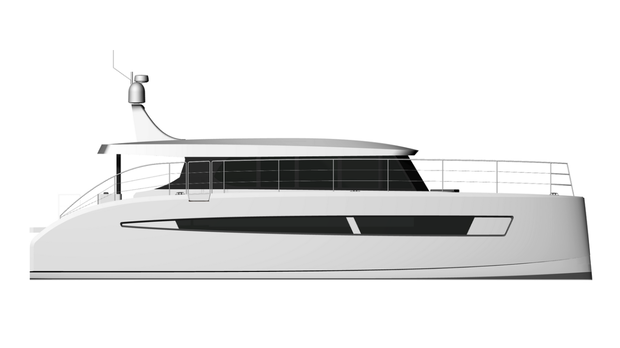
Layouts of the CATMAR EXPLORER 55 Power
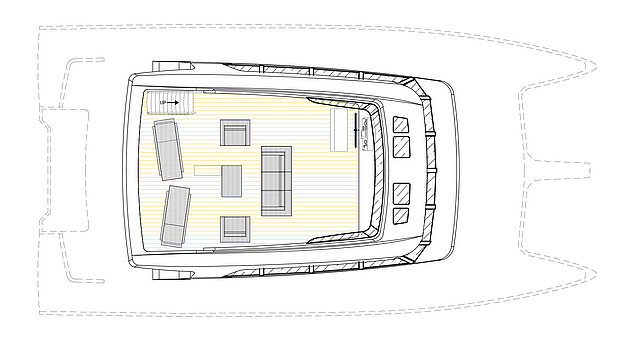
Sustainable and eco-friendly
Catamaris ® commitment to the sustainable reduction of its carbon footprint focuses in particular on the materials used. These components can be recycled and reused in an environmentally friendly way:
- Hulls and superstructure built of certified aluminium
- All components made of stainless steel (Inox)
- Engines, gearboxes, shafts, propellers, generators, water makers
- Cork for deck coverings
- Furniture construction, upholstery, safety glazing of the windows, fireproof insulation of aluminium hulls und superstructure
Catamaris ® also makes a significant contribution to reducing CO2 emissions during operation.On Catamaris ® catamarans, these components reduce CO2 emissions:
- Engines, gensets and equipment that meet the high EU standards in terms of CO2 emissions, for example.
- With our optional diesel-electric hybrid propulsion systems, a further significant reduction of CO2 emissions into the environment is achieved.
With a sustainable and environmentally friendly Catamaris ® catamaran, you can make a positive contribution to reducing your carbon footprint.

Cruise, Play, Stay
With all the comforts of home, arrowcat brings back the 20' center console, a unique design, understand why.
Enjoy your boat year-round and stay warm and dry during cooler weather or overnight trips, while also having a comfortable and private space to retreat for whenever you need a break. Here are a few reasons why an ArrowCat power cat is an excellent boat to consider.
A Catamaran Boat
Catamarans have two hulls, which provide more stability in the water. They are less likely to roll or pitch, which means they offer a more comfortable ride, especially in rough conditions and for people who are prone to seasickness.
Power catamarans are typically more fuel-efficient than monohull boats of the same size. It requires less energy and yields more performance per HP. The two hulls create little to no drag or resistance to get on plane, resulting in greater fuel economy. Allowing for longer journeys with fewer refueling stops.
Power catamarans have a shallow draft which means they can navigate in diverse cruising grounds – beaches, islands, rivers, channels, and coastal areas with limited water depth.
An Express Cruiser
Cabin boats are designed with comfortable sleeping quarters and living spaces. They feature a sleeping space with a bed, a galley with a stove, sink, and refrigerator, and a head with a shower and toilet.
Cabin boats provide protection from the elements, such as wind, sun, and rain. This allows for comfortable cruising in a variety of weather conditions, as well as providing a haven during storms
Express cruisers are designed for efficient and fast navigation, offering higher speeds compared to traditional cruising boats. They usually have powerful engines that enable them to cover long distances quickly, making them ideal for day trips or weekend getaways.
Powered By Outboard Motors
Outboard motors can provide excellent performance and speed. They can often reach higher speeds than inboard motors of the same horsepower.
Outboard motors have a simple and standard design and are relatively easy to install, they do not require additional components such as a transmission, propeller shaft, couplings, and struts, that inboard engines do. They are easily assessable and cost less to maintain than inboard motors because they are mounted outside at the rear of the boat.
Outboard motors are often designed with features that make them easy to maneuver. For example, they can be tilted or rotated to provide precise control and handling in tight spaces and shallower waters.

ArrowCat Power Catamarans
The outboard powered express cruising catamaran.
ArrowCat Express Cruisers are designed from the ground up to maximize comfort, performance, durability, and fuel efficiency, making them a better choice for both in-shore and off-shore family cruising. We build our powercats with your safety and enjoyment in mind, designing our signature interior cabin so that you’re not limited by the outside elements, but rather have the ability to enjoy your vessel at any given time, regardless of weather or location. Superior construction, optimized performance, economy, and safety can be found in every ArrowCat we make.
Explore Our 32' & 42' Signature Cabin Models
Perfect for offshore and inshore cruising, long distance and overnight trips, cold off seasons and hot boating seasons, and much more. The ArrowCat 32-foot and 42-foot models provide an exciting and versatile experience on the water. Explore to see which one could best suit your boating lifestyle.

ArrowCat 320 Coupe
Express Cruiser Catamaran Hull Planing Hull Design Twin Outboard Motors Standard Layout: 2 Cabins/ 1 Wet Head Trailerable Optional Tower Upgrade LOA: 31′ 2″/9.50 meters Beam: 10’/3.05 meters Draft: 20″/.508 meters
ArrowCat 420 Coupe
Express Cruiser Yacht Catamaran Hull Planing Hull Design Twin Outboard Motors Standard Layout: 2 Cabins/ 1 Full Head LOA: 41′ 9″/12.73 meters Beam: 14′ 9″/4.5 meters Draft: 18″/.46 meters
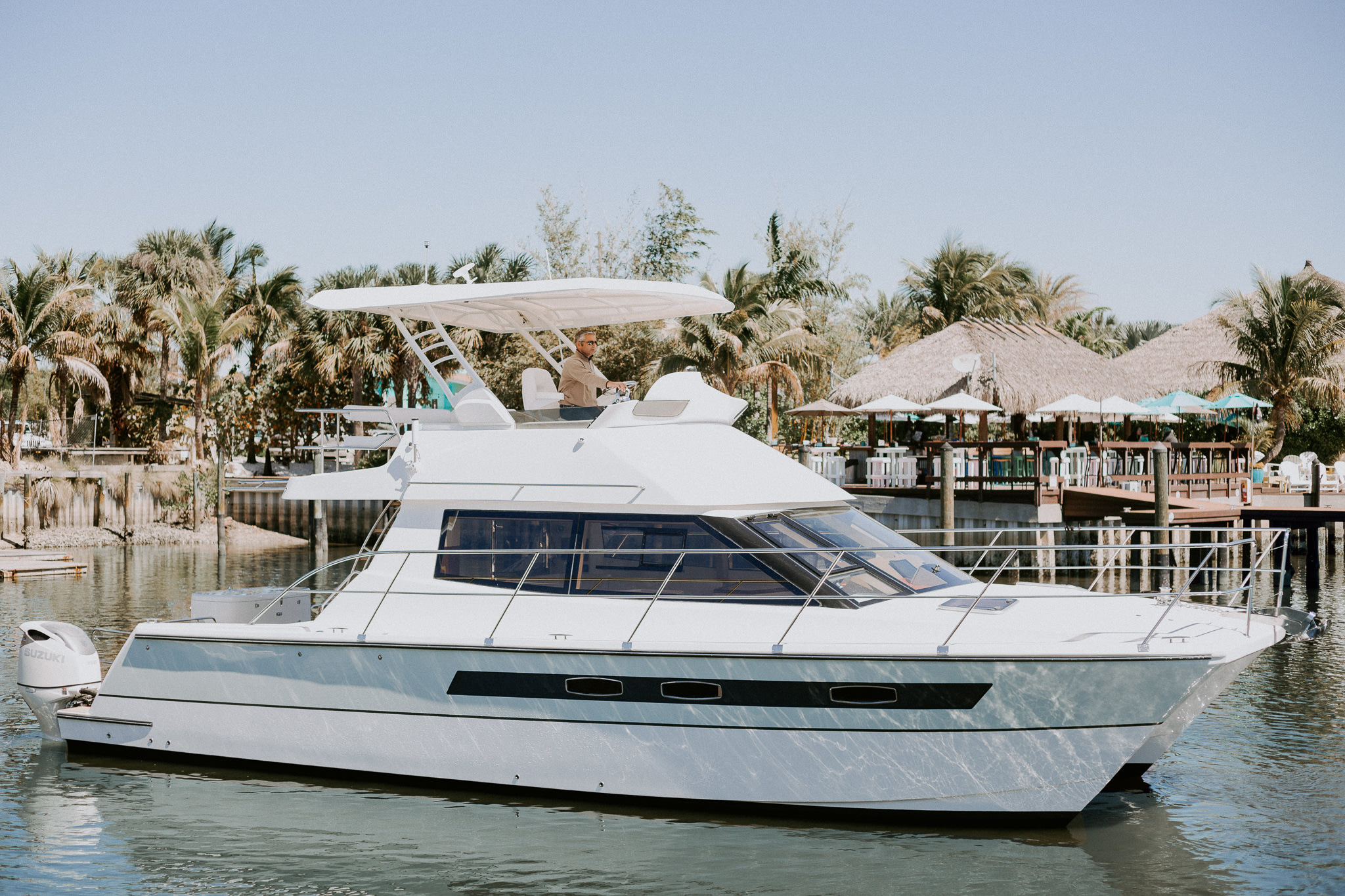
ArrowCat 420 Flybridge
Express Cruiser Yacht Catamaran Hull Planing Hull Design Twin Outboard Motors Standard Layout: 2 Cabins/ 1 Full Head LOA: 41′ 9″/12.78 meters Beam: 14′ 9″/4.5 meters Draft: 20″/.5 meters
Smooth, Fast, And Stable Ride
Talk To One Of Our Sales Experts To Schedule A Sea Trial & Experience The Feel For Yourself
Privacy Policy

ELEVATE YOUR EXPERIENCE

BEST OF BOTH WORLDS, HYBRID SOLUTIONS, FUEL SAVINGS

This equilibrium maintains speed when needed, ensuring secure passages, optimal operational economy, unwavering reliability, and zero-fuel serenity at anchor.
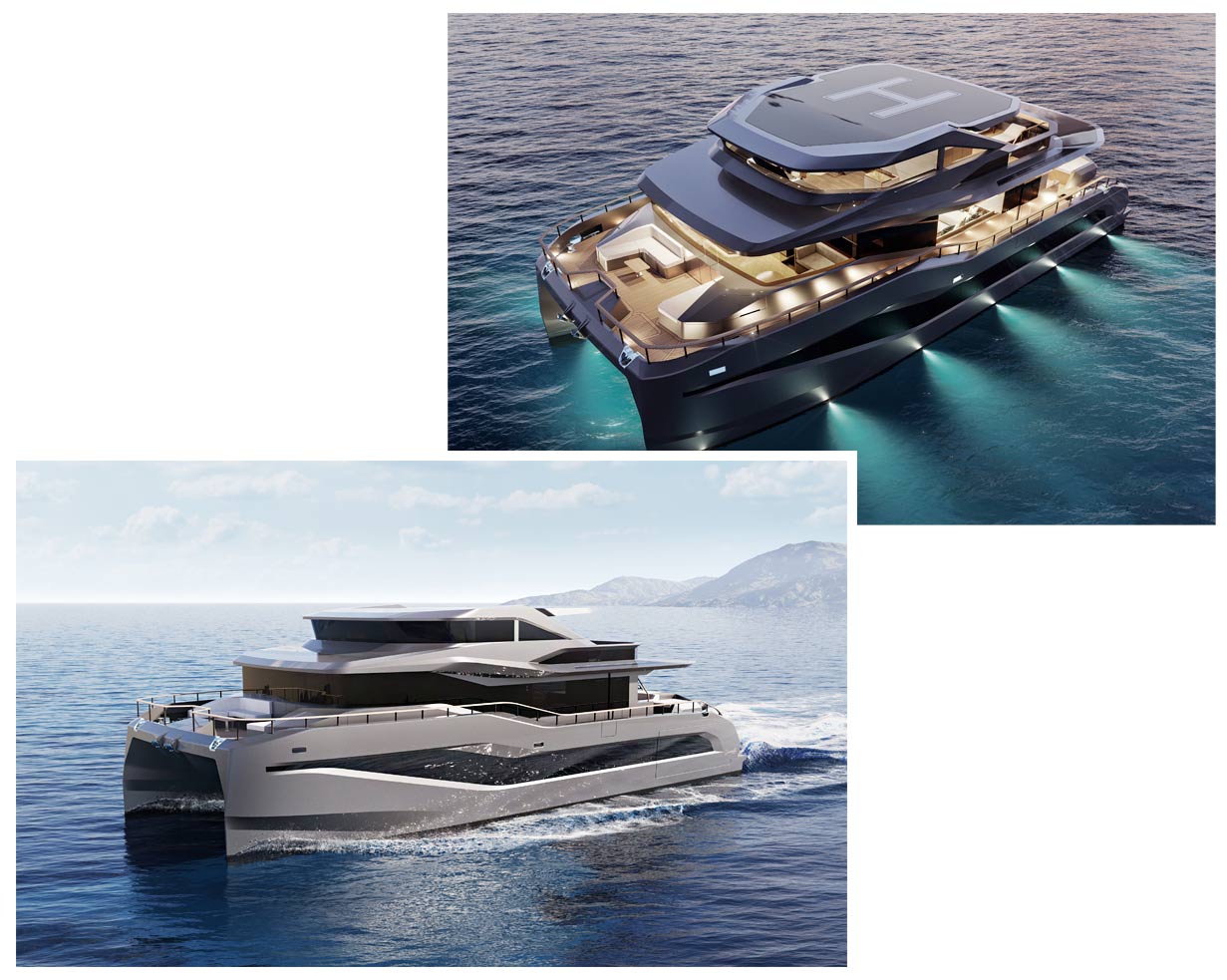
The ocean connection bestows tranquility, adventure, and sustenance, fostering personal well-being and a vibrant lifestyle.
CUSTOM CATAMARAN ALUMINIUM YACHTS
Discover the ultimate in custom catamaran aluminium yachts with Cosmopolitan Yachts. Our passion for excellence shines through in every detail, from the cutting-edge hybrid diesel/electric propulsion system to the meticulous construction using top-grade materials and state-of-the-art technologies.
At Cosmopolitan Yachts, we take pride in delivering superior build quality and attention to every detail, ensuring unmatched durability, performance, and luxury. Our custom catamaran aluminium yachts are designed to excel in any environment, with marine-grade aluminium construction that provides strength, sturdiness, and resistance to corrosion for sailing in any water conditions.
Whether you’re looking for a silent electric boat or speeds of over 26 knots, our custom catamaran aluminium yachts offer ultimate flexibility in power and fuel efficiency. And with advanced hull forms and superior bow height, you’ll enjoy comfortable sailing even in seas exceeding 1.75m.
Embark on a journey of a lifetime with a custom catamaran aluminium yacht from Cosmopolitan Yachts. Let us help you bring your dream yacht to life with our superior build quality, attention to detail, and passion for excellence. Contact us today to start creating the perfect yacht for your needs and make unforgettable memories on the water.
HYBRID-ELECTRIC, HYDROGEN AND FUTURE BIOFUEL AND BIOGASES
At Cosmopolitan Yachts, we’re committed to creating custom catamaran yachts with the latest in propulsion technology. Our hybrid diesel/electric propulsion system offers ultimate flexibility in power and fuel efficiency,but we don’t stop there. We’re also exploring the use of hydrogen and biofuels as a more sustainable alternative for yacht propulsion and all our yachts are classified as “Hydrogen-Ready”. Hydrogen yachts or the use of biofuels and biogas could be the future of yachting, offering an even cleaner and more sustainable, self-sufficient energy source for powering your yacht.
Our dedication to sustainability and innovation means that we’re always looking for ways to reduce our impact on the environment while still delivering unparalleled performance and luxury. With the combined integration of the most advanced electric and hybrid technologies and, with the use of the next generation of fuels such as hydrogen, solar, biogas or biofuels,we can offer the perfect propulsion system to meet todays.
DISCOVER OUR YACHTS
New journeys await.
Discover the ultimate in durability and performance with our catamaran yacht range, designed to excel in any environment. with a robust aluminium construction and hydrid diesel/electrical propulsion system to make the most of the best technological advancements without any compromises.
THE WAY FORWARD
Equipped with either a conventional diesel or a hybrid diesel/electric propulsion system installed in both hulls, each with dual power inputs. This grants Cosmopolitan Yachts the ability to operate silently and emission-free as an electric boat at lower speeds, while still achieving speeds of over 26 knots. Complete redundancy and future proof.
A MAJOR IMPROVEMENT
To create the ultimate catamaran yacht, we have meticulously crafted every aspect with a keen eye for detail, to provide unparalleled performance and luxury. Our yachts are constructed using top-grade materials and state-of-the-art technologies, ensuring durability, comfort, and efficiency.
SUPERIORLY BUILT
The use of high-quality marine aluminium in our yachts not only provides strength and sturdiness but also ensures resistance to corrosion, making it perfect for sailing in various water conditions.
EXCEPTIONALLY DESIGNED WHIT A MAJOR IMPROVEMENT
We believe that every yacht should be a masterpiece, crafted with passion and dedication. Our commitment to quality and attention to detail is reflected in every yacht we build.
UNMATCHED COMFORT
The most spacious interiors, complete with luxurious to create an unforgettable sailing experience. The modern exterior design pays meticulous attention to every detail, including the placement of windows and other features that provide maximum comfort and offer breathtaking views of the surrounding water.
The yacht’s advanced hull form and superior bow height work in tandem to ensure comfortable sailing, even in seas exceeding 1.75m.
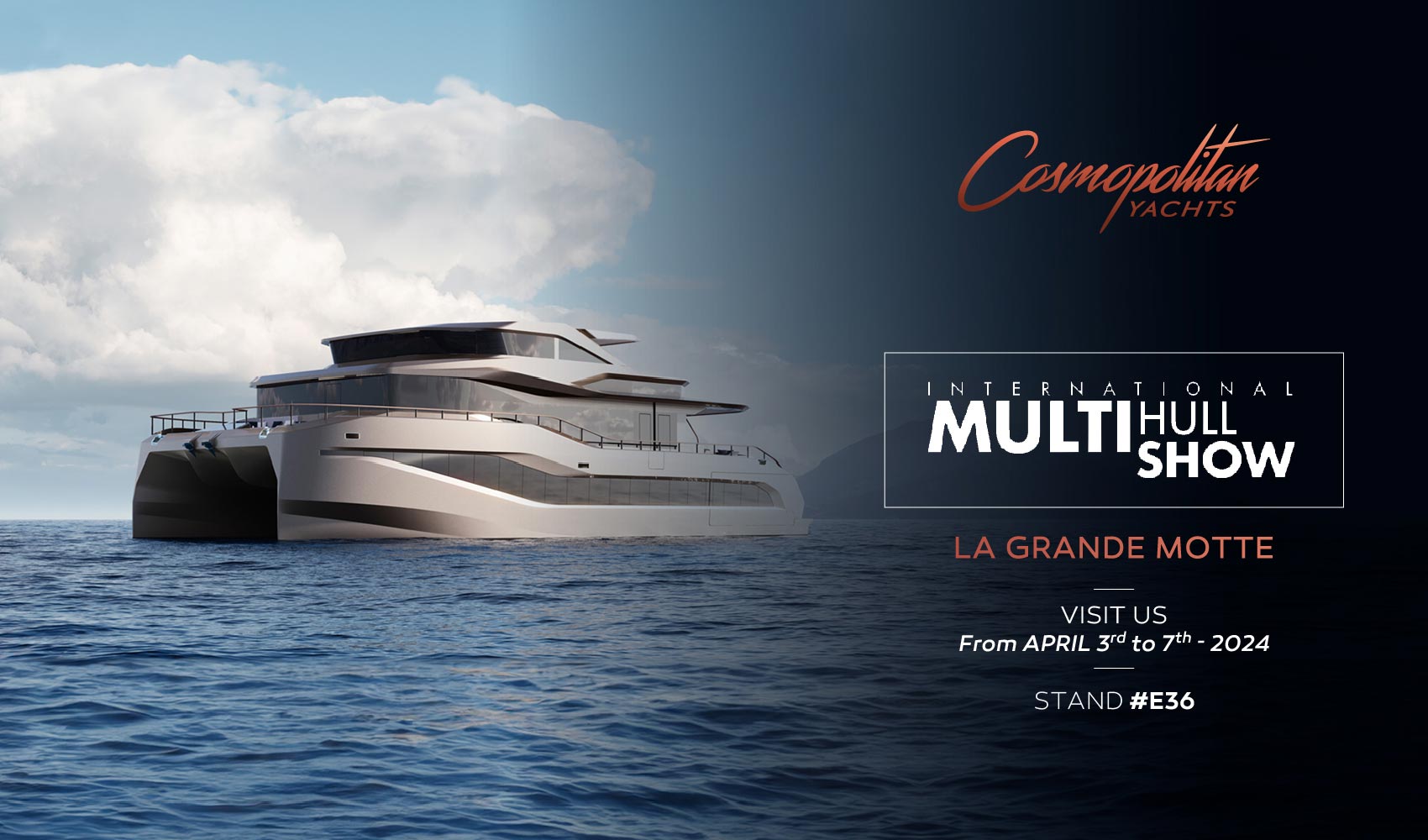
- THE PRINCESS PASSPORT
- Email Newsletter
- Yacht Walkthroughs
- Destinations
- Electronics
- Best Marine Electronics & Technology
- Boating Safety

The Power Catamaran Compilation
- By Yachting Staff
- Updated: December 21, 2018
Power Catamarans have been growing leaps and bounds in popularity, and, in lengths and widths. And for good reason. These cruise-centric yachts offer homelike livability for avid travelers, are fuel efficient and are fairly intuitive to run. Power cats are popular in the bareboat charter market too, for these very reasons.
Here, we take a look at 12 catamarans ranging from a cruising-couple-size 36-footer to a 78-footer for friends, family and some more friends. And there are myriad power options: outboards, diesel inboards, hybrid or even all-solar power.
Fountaine Pajot MY44
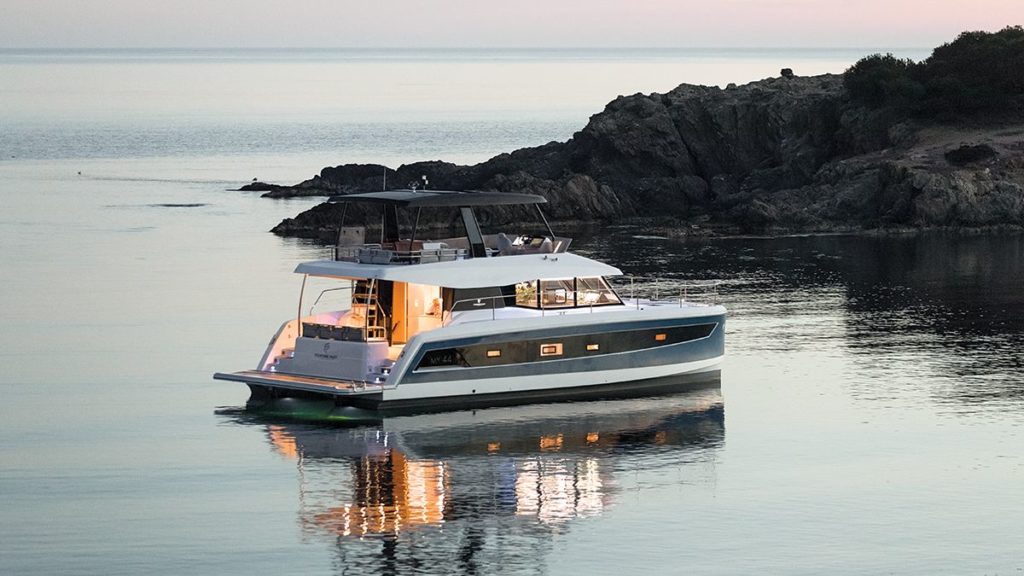
The Fountaine Pajot MY44 , a creation of Italian architect Pierangelo Andreani and French designer Daniel Andrieu, has a main deck that’s open from the aft-deck seating all the way forward to the starboard helm station. The sense of spaciousness is significant, for several reasons. First, four glass panels aft can all slide to port, creating an indoor-outdoor space with the aft deck and salon. In the salon, 32-inch-high windows extend for 12 feet down the sides of the yacht, with three sections per side, bringing in natural light along with the three forward panes that comprise the windshield. Finally, 6-foot-6-inch headroom provides vertical clearance, with a 21-foot-7-inch beam that adds interior roominess while keeping the yacht stable.
Read more: Fountaine Pajot MY44
Silent-Yachts 55
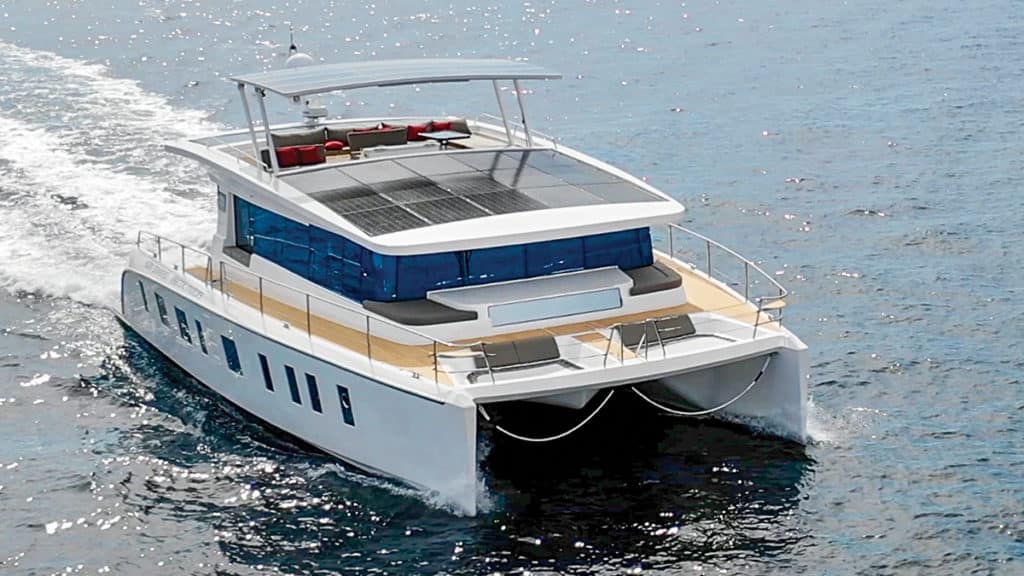
The ideas about which solar panels, electric motors, inverters and the like to use — and more importantly, Michael Köhler says, how to configure them — became the basis for the brand Silent-Yachts. The company offers 55-, 64- and 79-foot catamarans that run on solar-electric propulsion. The Silent 55 premiered this fall, and the 64 is sold out for the next two years, Köhler says.
Read more: Silent 55
Horizon PC74
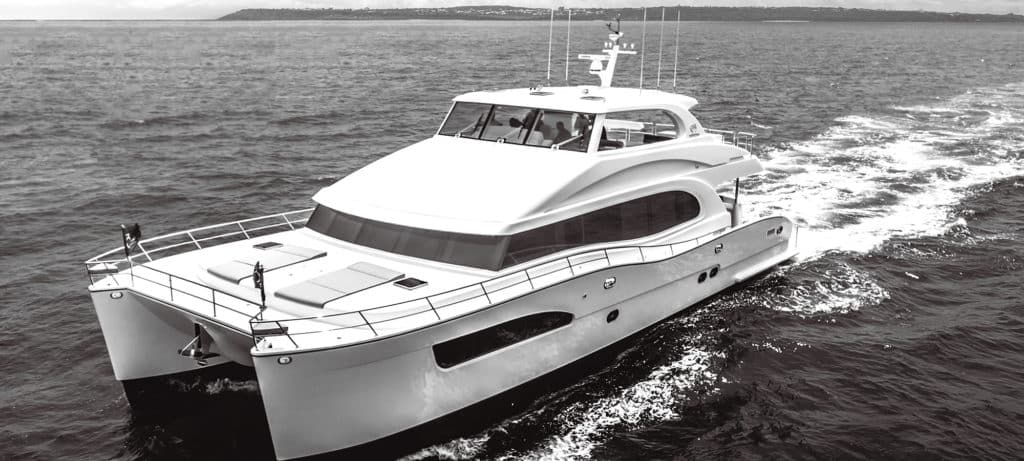
As founder and director of The Powercat Company, a Horizon Power Catamarans distributor, Stuart Hegerstrom had long believed that catamaran builders needed to design their yachts to more stylish standards.
“The boats were very boxy,” he says, based on his years of experience with cats in the charter market. He and his partner, Richard Ford, asked Horizon to produce models that had high-end finishes and looked good inside and out.
The Horizon team brought in mega-yacht designer JC Espinosa to work with its own craftsmen. The result aboard the Horizon PC74 is a catamaran with exterior styling, layout and functionality that should appeal to private and charter owners alike.
Read more: Horizon PC74
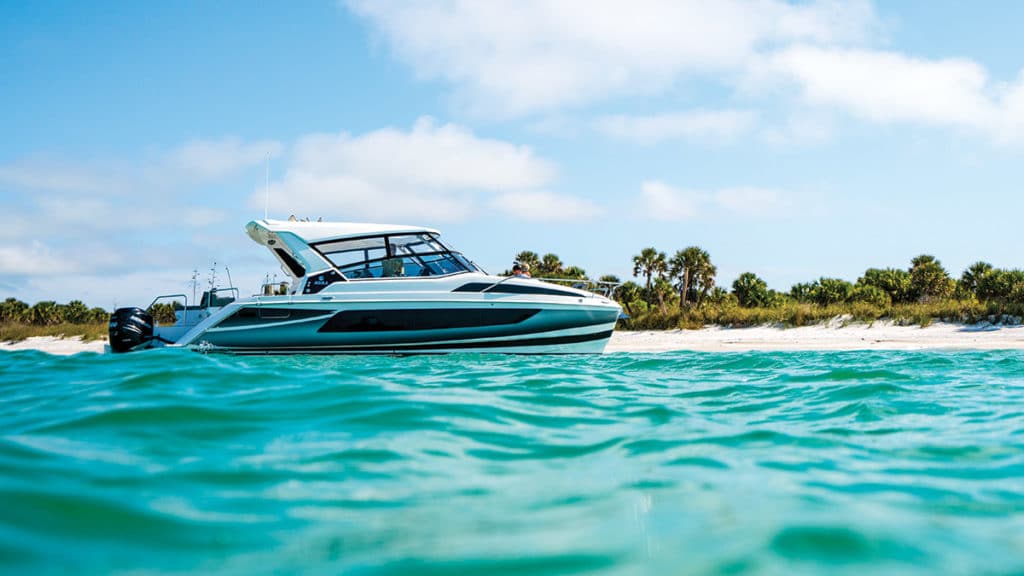
The Aquila 36 is a departure from her sisterships in that she is an outboard-powered, express-cruiser-style catamaran, but she also adheres to MarineMax’s philosophies.
With a single main living level from bow to stern and a beam of 14 feet 7 inches, the Aquila 36 is like a bowrider on steroids. She has seating that can handle 20 adults for outings and barbecues, and there are two staterooms below, one in each hull, for family weekending. The staterooms have nearly queen-size berths, en suite heads, stowage and 6-foot-6-inch headroom.
Read more: Aquila 36
Lagoon Seventy 8 Powercat
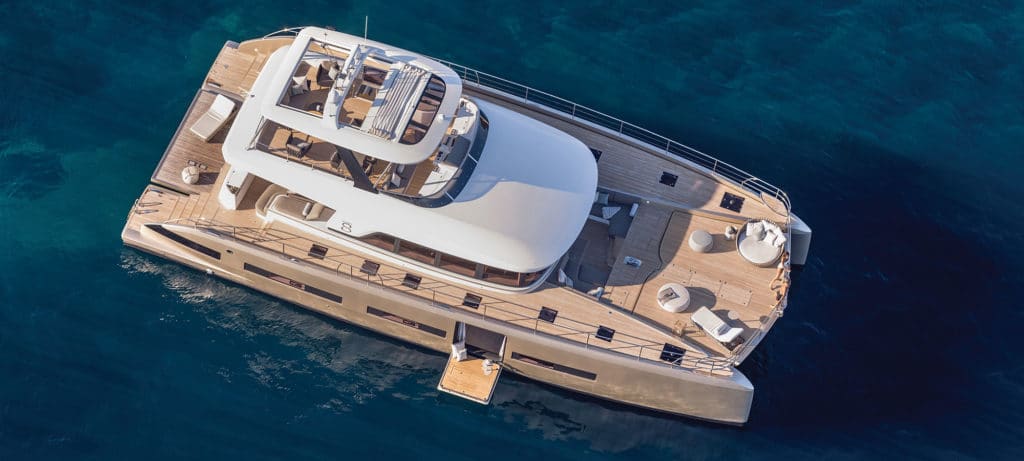
Lagoon is a division of Groupe Beneteau, the world’s largest builder of sailing yachts, and the Lagoon Seventy 8 Powercat is a developmental sistership of its Seventy 7 super sailing cat. The Seventy series yachts are built at Construction Navale Bordeaux in France, which had to add a new yard to construct these catamarans because they require separate stern molds for the power and sail versions.
Read more: Lagoon Seventy 8 Powercat
Horizon PC60
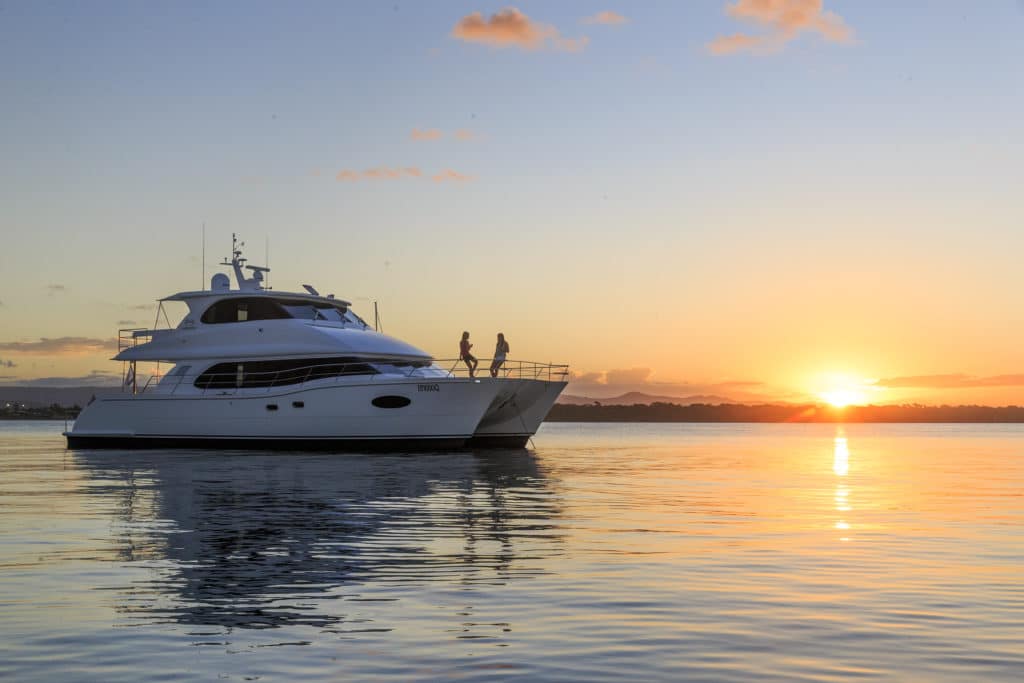
To understand the Horizon PC60 power catamaran , you need to put aside preconceived notions about midsize yacht amenities. For example, main-deck master suites are the province of yachts over 100 feet length overall. Incorrect. This 60-footer has an elegant and spacious owner’s stateroom on the same level as the salon. If you want a 14-foot center console tender on a 60-foot yacht, you have to tow it. Wrong again. On the PC60, you hoist it onto the upper deck, no problem.
Read more: Horizon PC60
40 Open Sunreef Power
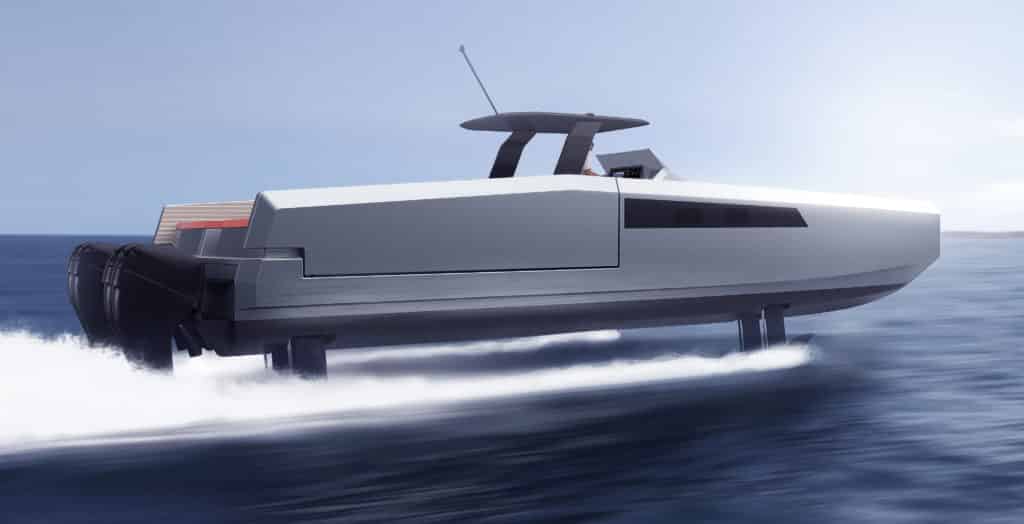
Sunreef is known for pushing the boundaries of catamaran design, incorporating four adjustable hydrofoils into a twin-hulled speedboat.
The Polish builder is one of several European builders (including Evo, Fjord, Wider and Wally) transforming the open day-boat category with creative designs. Beyond its hydrofoils, the 40 Open Sunreef Power ‘s cockpit has side “wings” along the aft gunwales that fold out at anchor, widening the beam from 17 feet to 22 feet 9 inches.
Read more: 40 Open Sunreef Power
Sunreef 50 Amber Limited Edition
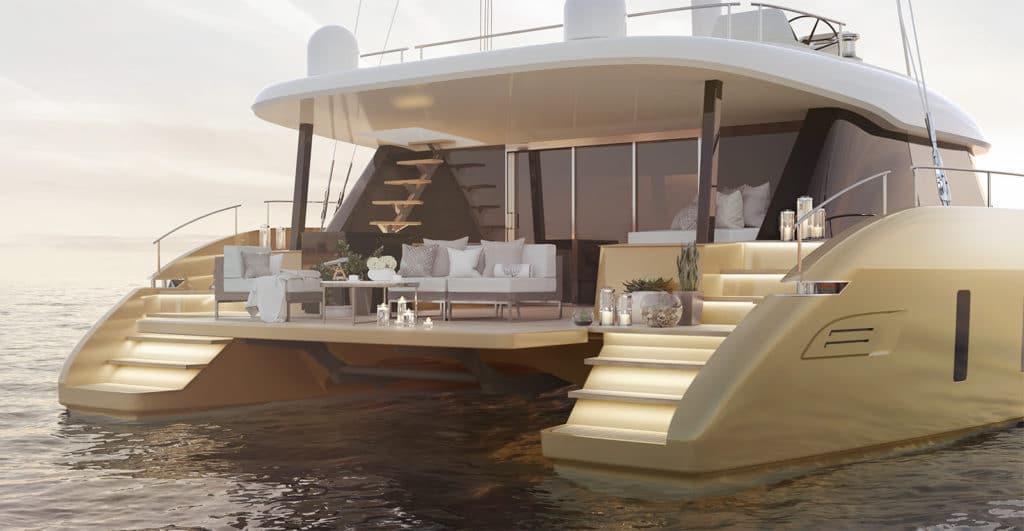
Sunreef Yachts introduced its 50 Amber Limited Edition , with plans to launch just 10 hulls of the exclusive design.
The Sunreef 50 Amber Limited Edition will have a carbon fiber mast and boom, four layout options and numerous amber-colored elements, including the hull.
Read more: Sunreef 50 Amber Limited Edition
Lagoon 630 Motor Yacht
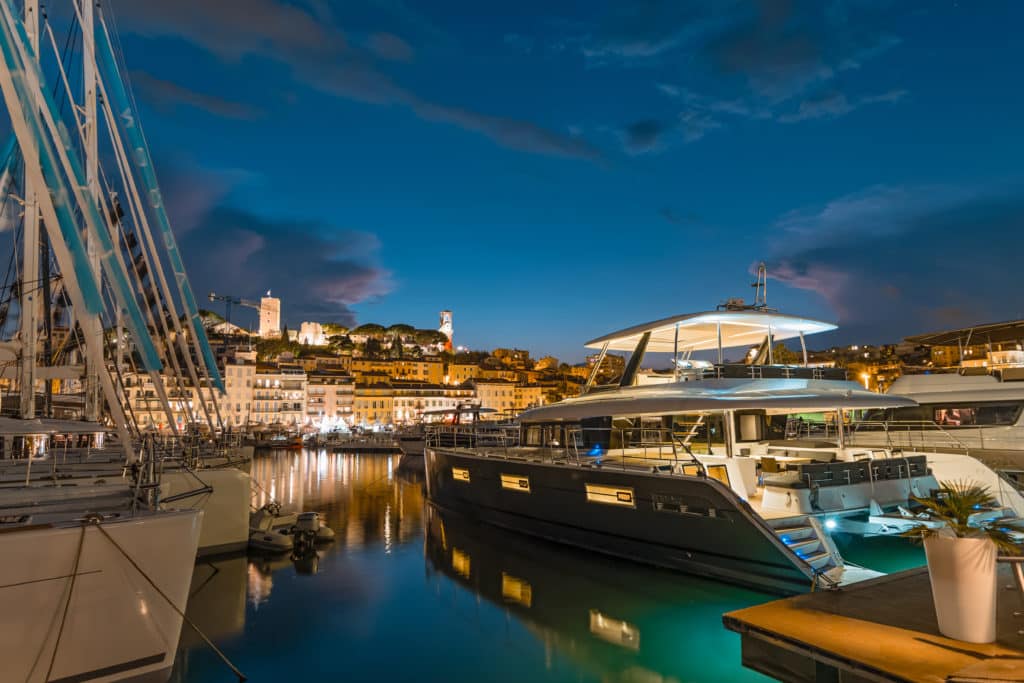
Fitted with the optional twin 300-horsepower Volvo Penta D4 diesels, the Lagoon 630 MY burns only 1.64 gph total at 6 knots, giving a theoretical range of 2,952 nautical miles with standard tankage of 793 gallons. Hull No. 1 had an optional 502-gallon tank, giving it transatlantic range.
Luxury, stability and economy are all hallmarks of Lagoon’s return to luxury motor yachts. If you can take a ride, it will be worth your time.
Read more: Lagoon 630 Motor Yacht
Fountaine Pajot MY 37
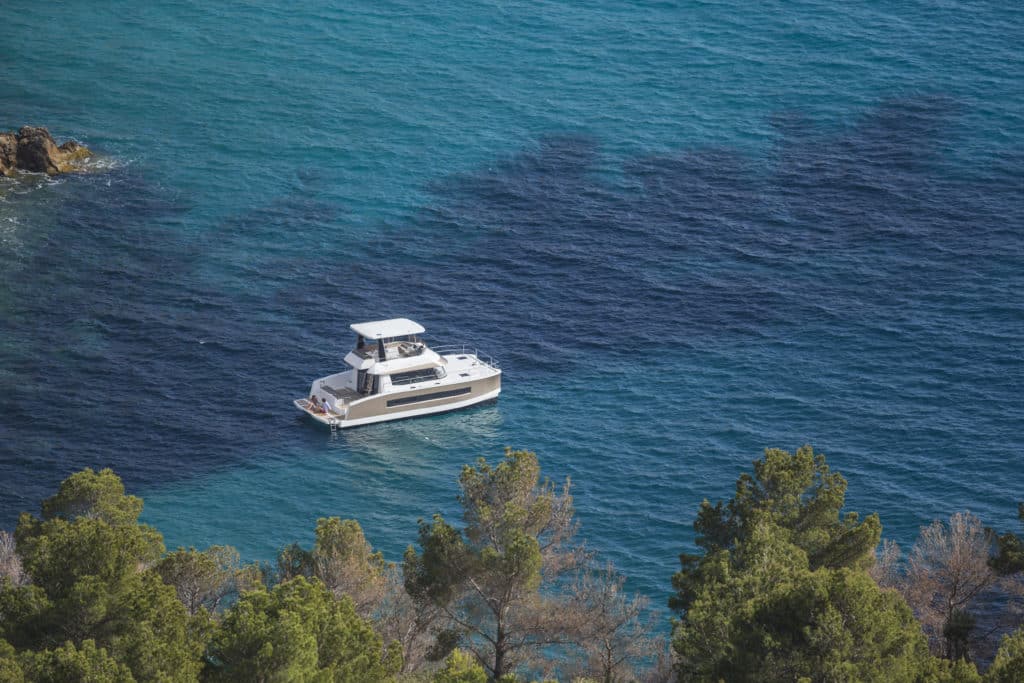
The Fountaine Pajot MY 37 easily accommodates the seafaring family with three- and four-stateroom options. In the three-cabin version, called Maestro, you’ll find an owner’s suite in the portside hull with a queen-size berth and en suite head. Two double-berth cabins and one more head are available for the kids. If your brood is bigger, the Quator setup features four double cabins with two heads.
The 37 is a traveler and can be powered with twin 150 hp or 220 hp Volvo Penta diesels. Top speed with the smaller engines is 17 knots, while it’s 20 knots with the bigger power plants. Interestingly, at 7 knots, the fuel consumption is the same, with either set of motors offering voyagers a 1 ,000-nm range.
Read more: Fountaine Pajot MY 37
Solarwave 64
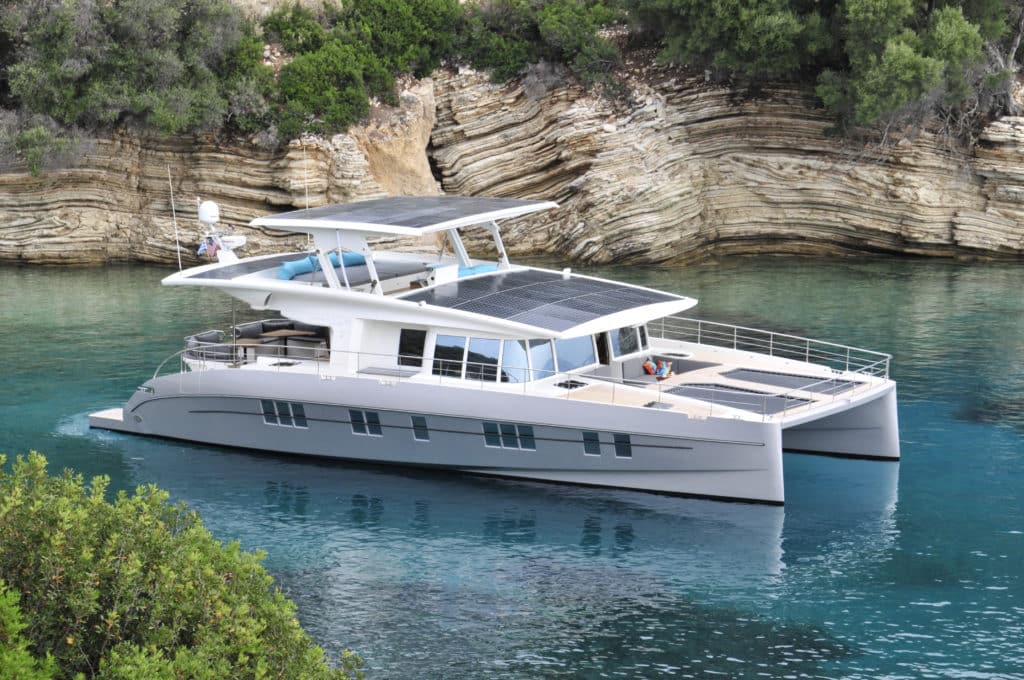
Many yachts boast eco chops because they have a handful of solar panels that power the microwave or navigation lights. The Solarwave 64 , launched last summer, has the potential to run on sunshine alone. The vessel’s 42 solar panels generate 15 kW that are stored in batteries weighing about 1,300 pounds. They connect to electric motors.
Read more: Solarwave 64
Glider SS18
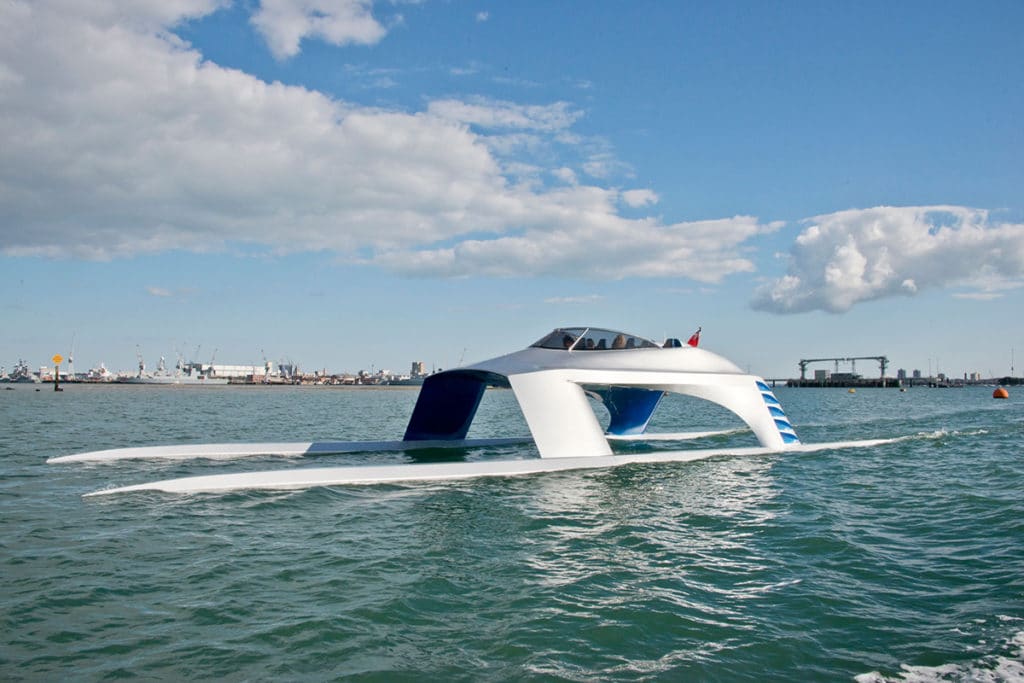
This British builder says it strives for design innovation and the Glider SS18 displays that DNA, the result of 8 years of research and development. She has a head-turning, catamaran hull form constructed from aluminum and composite materials. She is 60 feet LOA with a 17-foot beam, and has a relatively shallow 1-foot draft. Powered by quad Yamaha 300 hp outboards, she can reportedly reach 50 knots, and with her Stability Control System (SCS), should give a smooth ride while doing it.
Read more: Glider SS18
- More: aquila , Aquila Boats , Express and Flybridge Cruisers , Fountain Pajot , Glider Yachts , Horizon Power Catamarans , Lagoon , Power Catamarans , Silent-Yachts , Sunreef , Yachts
- More Yachts
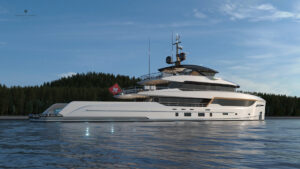
New Flagship for Bering Yachts: The B165
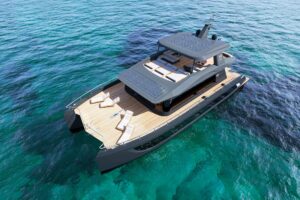

Power Catamaran Popularity Rising
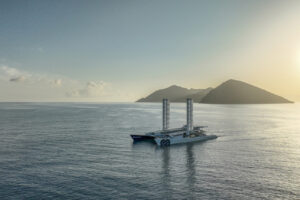
“Energy Observer” Zero-Emission Boat Showcases Sustainability
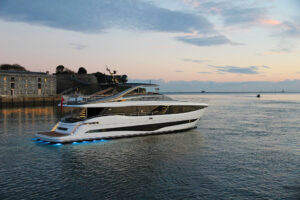
Princess Yachts’ Y95: A Flagship Flybridge
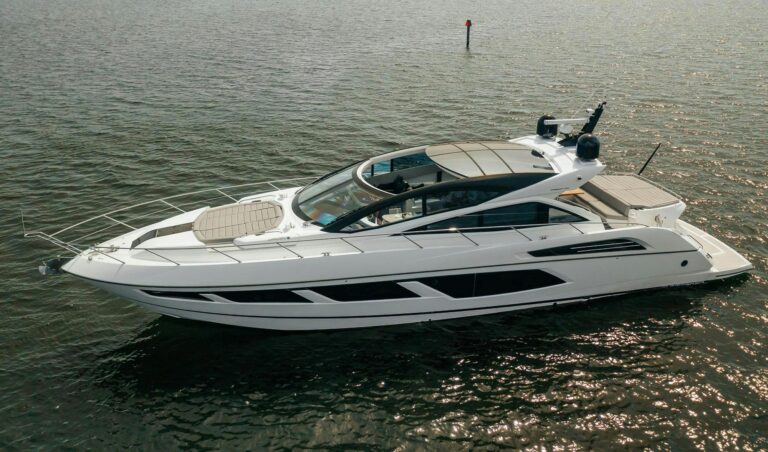
For Sale: Sunseeker Predator 68
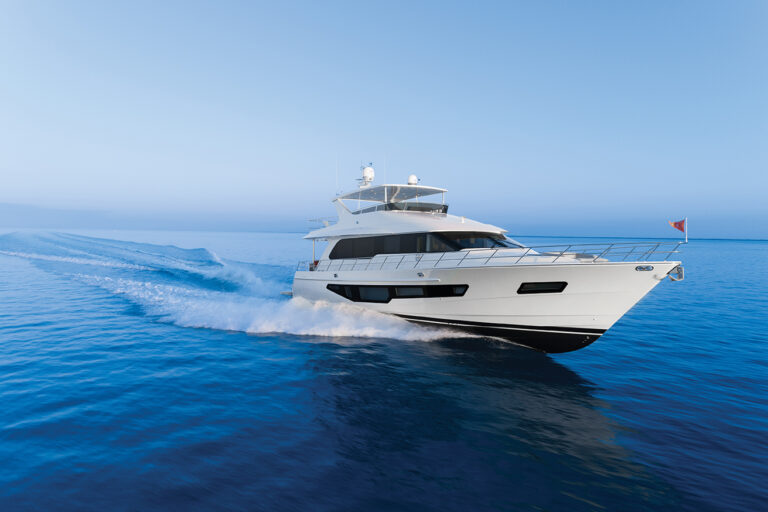
For Sale: CL Yachts CLB 72
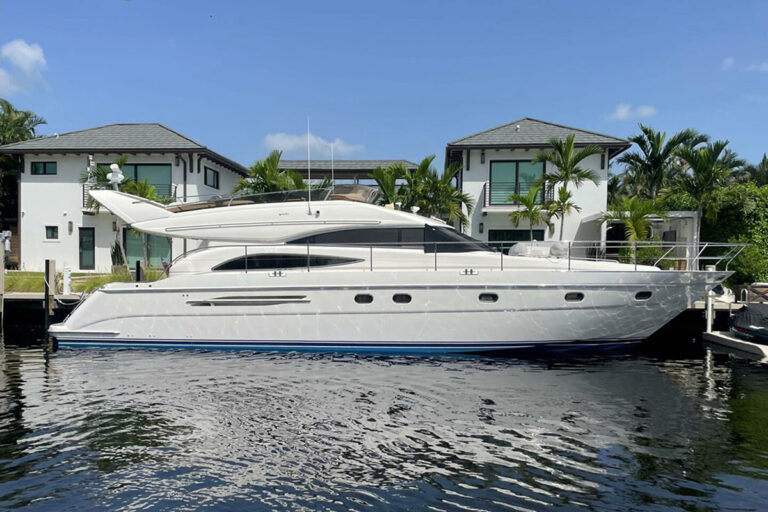
10 Yachts Under $500,000 You Can Have Today
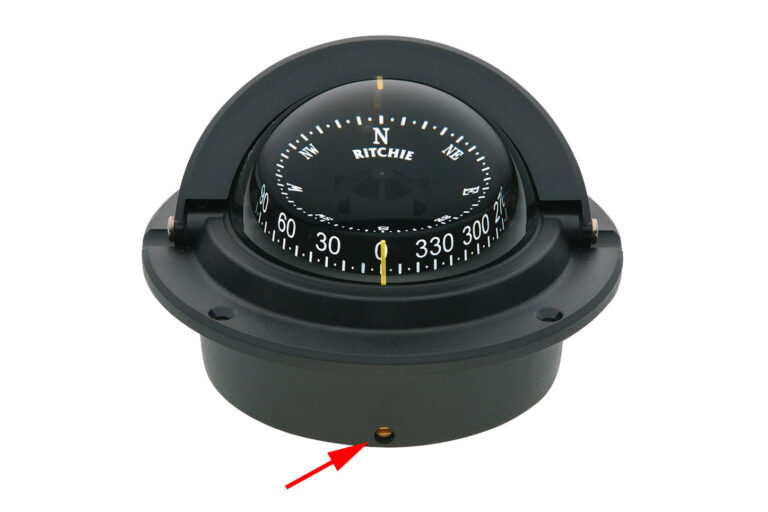
How to Swing a Compass on a Boat

- Digital Edition
- Customer Service
- Privacy Policy
- Email Newsletters
- Cruising World
- Sailing World
- Salt Water Sportsman
- Sport Fishing
- Wakeboarding
0&&parent.frames.length) { d=parent.frames[n.substring(p+1)].document; n=n.substring(0,p);} if(!(x=d[n])&&d.all) x=d.all[n]; for (i=0;!x&&i 0&&parent.frames.length) { d=parent.frames[n.substring(p+1)].document; n=n.substring(0,p);} if(!(x=d[n])&&d.all) x=d.all[n]; for (i=0;!x&&i 0&&parent.frames.length) { d=parent.frames[n.substring(p+1)].document; n=n.substring(0,p);} if(!(x=d[n])&&d.all) x=d.all[n]; for (i=0;!x&&i
Video's shipyard .
F I R S T I N C A T A M A R A N S
- 1-360-457-5752

- RecPro | Recreational
- PaxCat | Passenger
- LabCat | Survey
- Landing Craft
move beyond ordinary with brix marine
LIMITED AVAILABILITY – BOOKING 2025 DELIVERIES NOW
join the legacy
FEATURED BOAT
3814-ctc offshore, latest brix videos, safety. stability. speed., efficient. spacious. safe., stable. strong. ergonomic., 4wd of the sea, first in catamarans, discover our boats.
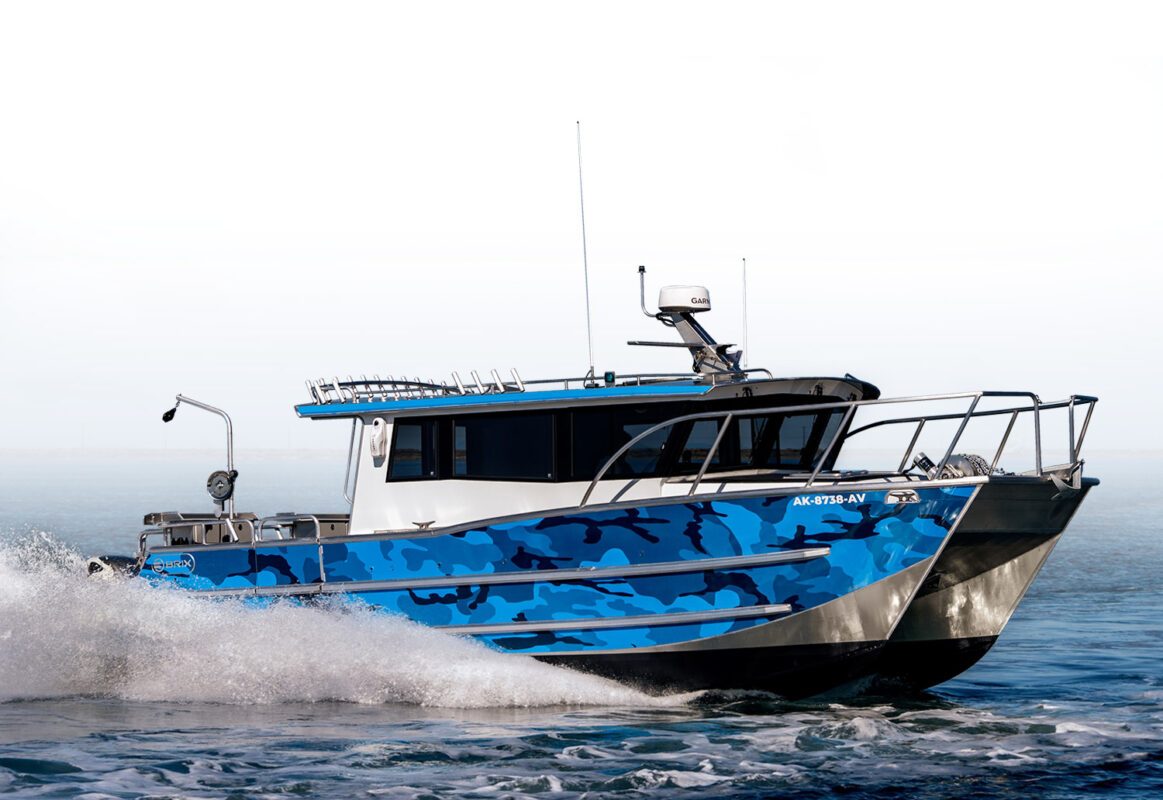
RECREATIONAL
Walk-around or full width cabin
Join the BRIX legacy with a recreational cat built to professional standards. Be it for fishing or cruising, each custom RecPro is distinctly tailored for adventure.

TOUR, FERRY, DIVE
Customize For Diving, Whale Watching Or Luxury
BRIX Marine’s PaxCats deliver reliability and comfort for the most memorable excursions. Choose the sweetest ride on the water for up to 49 passengers and beyond.
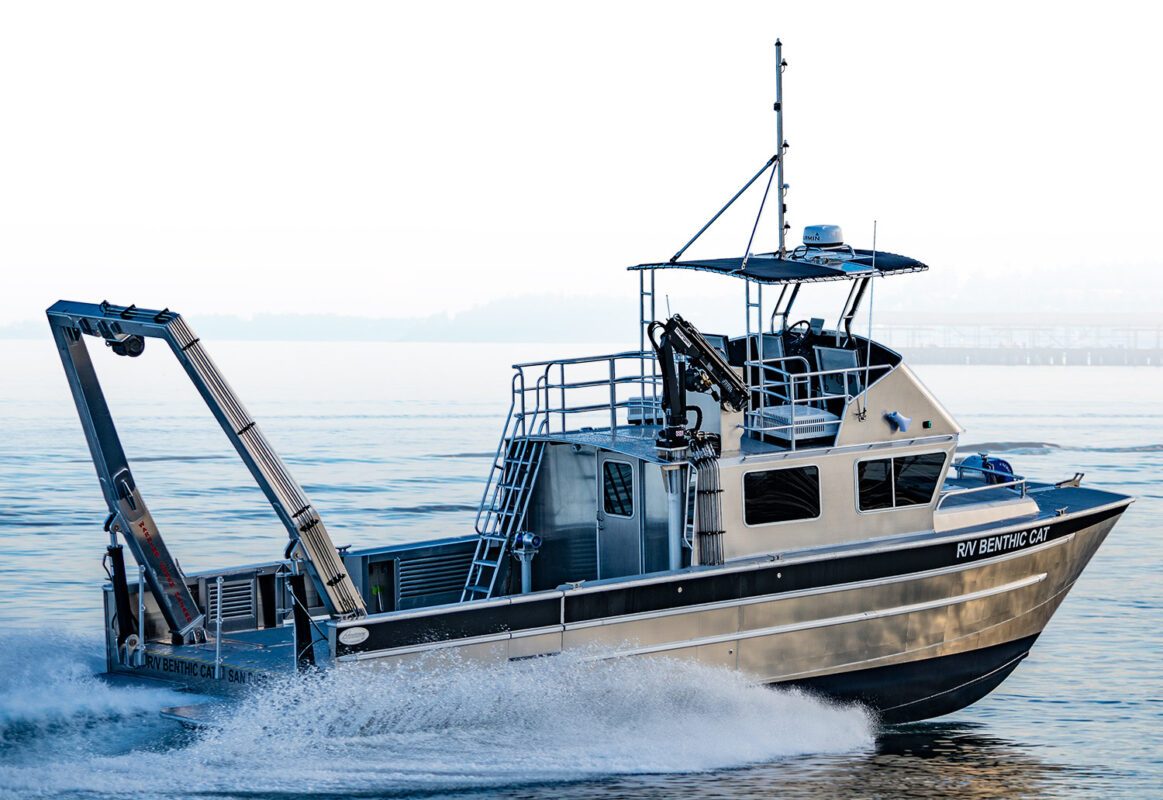
SURVEY, RESEARCH
Workboat’s Top-10 Significant Boats Of 2019
BRIX provides the most capable boats under 50′ in the marine science industry. Outfit with equipment such as a knuckle boom crane, an A-frame, or the versatile BRIX HYPR-Arm.
ABOUT BRIX MARINE

has earned a solid reputation for pioneering and crafting the world’s most rugged aluminum catamarans and workboats since 1991.
The company was founded in Canada and moved to Port Angeles, WA in 2001. We gained new ownership under Bryton Marine Group in 2017, which fortified the company’s focus on our Core Values and strategic plan for our future.
“Our team has developed strong momentum with our boat portfolios and customers. As we look to the future, BRIX Marine will honor the legacy we have built and move beyond to deliver exceptional custom boats,” said Perry Knudson, Managing Director.
BRIX literally means the scientific measure of sweetness in liquid. This translates well to the high-performance boats the company is known for. “BRIX is more than a sweet riding hull,” said Knudson. “Our custom projects begin with the first communication and the relationship continues after the boat is delivered. BRIX is committed to an owner-centric approach.”
BRIX Marine has another important target. “We want to be the best place to work in our community,” said Knudson. BRIX employs master level craftsmen in the disciplines required to build welded aluminum boats. The company invests in defining career paths and training employees to gain the skills needed to advance in their fields.
The BRIX team will broaden and diversify its portfolio of welded aluminum boats, known as being “first in cats.” The newly redefined custom recreational portfolio is in high demand, and BRIX Marine is bringing this same innovative approach to other key markets.
“Our luxury water taxi designs are raising the standards for passenger vessels as seen with the recent launch for Liberty National Golf Club. The research vessel Bob & Betty Beyster we delivered in 2019 earned a Workboat Magazine award as a Significant Boat of the Year. That design is reshaping our research vessel line-up,” commented Perry Knudson. “We have a lot of exciting things on the horizon. This new identity represents who we are and where we’re going.”

Your Vision. Our Expertise.
We believe solutions exist to unique vessel demands, and we provide solutions to our clients every day, giving them the best possible opportunity to succeed on the water.
Let’s build your boat.
Our Core Values
- Quality Craftsmanship
- Financial Responsibility
- Accountability
SOME OF OUR VALUED CLIENTS


Professional BoatBuilder Magazine
An aluminum expedition catamaran.
By Dieter Loibner , Apr 5, 2022
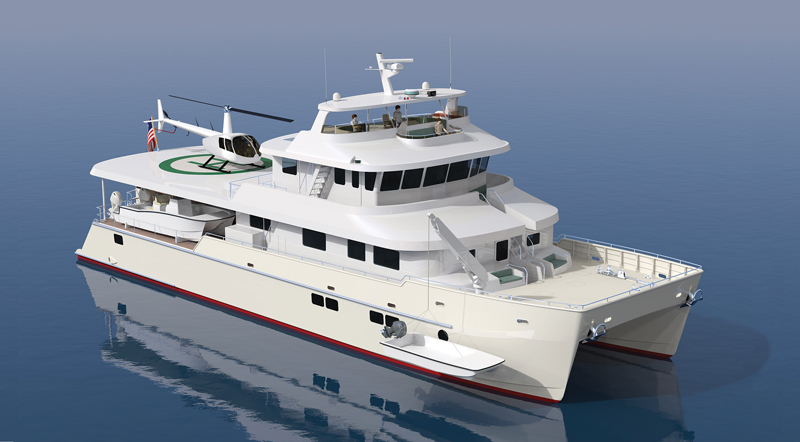
With 110′ LOA, a 35′ beam, and 45′ (33.5m, 10.6m, and 13.7m) of bridge clearance, the H-2 catamaran seeks to make a case for U.S. custom boatbuilding.
Hauling toys beyond the horizon is the raison d’être for a rugged go-anywhere catamaran designed and built in the U.S., a notable exception in the world of big yacht projects.
Gunboat might have left town, but there’s another big catamaran under construction in its old facility in Wanchese, North Carolina. It’s called H-2 , short for Hippocampus 2 , a stout 110-footer (33.5m) that liberally and intentionally quotes from the expedition/workboat vernacular. It’s built from aluminum and was conceived to go to the back of the beyond, where adventure beckons and Vessel Assist doesn’t operate. Aside from commodious and cushy accommodations, the boat offers grid autonomy, ocean-crossing range, and cargo capacity to match the mission of hauling a 26 ‘ (7.92m) tender, a 17 ‘ (5.8m) skiff, a two-person submarine, a four-seat ATV on the main deck, and a small helicopter on the flight deck aft.
The boat was commissioned by Brian Schmitt, 67, a real estate executive in the Florida Keys, who pilots his own plane to commute to the Bahamas, where he keeps Hippocampus , his current 57 ‘ (17.37m) cold-molded wood/epoxy catamaran. I asked him about the jump from 57 ‘ to 110 ‘ . “I never thought I’d have the ability to do that in my own boat until probably the last few years,” he replied, adding that “it would be 120 ‘ [36.58m] if I had to do it today.”
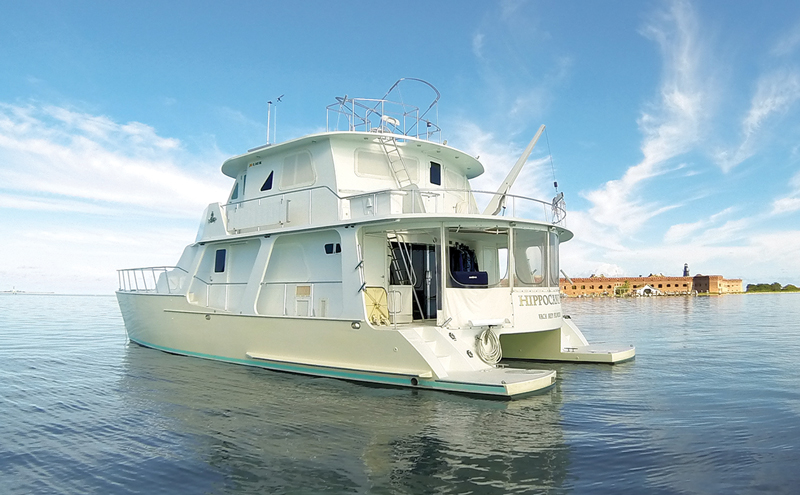
Its predecessor, Hippocampus, built in wood/epoxy, was launched in 2003. At 57′ (17.37m), it is about half as long as H-2, but with 22,500 miles under its keels, it was a useful starting point for designing the new vessel.
Wearing shorts and a shirt with the new boat’s name and logo to our meeting, Schmitt talked openly about his project, which he manages as attentively as his real estate brokerage with 130 agents. Communication is his thing, responding to e-mail questions in near real time (in ALL CAPS) and talking to contractors directly. No project manager.
A passionate diver who habitually explores remote and exotic locales, Schmitt said he was happy with the first Hippocampus , which has three staterooms and cruises at 15 knots on twin 370-hp Yanmars. “It was the vehicle that got our 17 ‘ tender wherever we needed it.” But running the little boat 60 or 70 miles a day lost its charm. “One of the things I wanted was a twin-engine tender that would have more room for dive gear. That ended up being a 26 ‘ Calcutta, so I needed a bigger mother ship.”
With accelerating climate change, the carbon footprint of ships and large yachts is under scrutiny, but hydrocarbons still win when speed, range, and payloads are priorities. While H-2 doesn’t break the mold there, Schmitt pointed to the project’s virtues as a U.S. domestic build. “You can’t complain about global warming when you’re flying around in your G500 jet that’s contributing more CO2 emissions than anybody else in the world,” he said. “You can’t complain about all the boats being built in Germany, The Netherlands, and Italy, and then go buy a boat [there].” Schmidt wanted to build locally, keeping jobs and money in the U.S. Besides, he noted, this approach simplified communications and enabled him to personally check on progress during COVID. Perhaps most importantly, he could pick a team of trusted and compatible mates to turn his dream into a boat.

The vast build hall left vacant when Gunboat left Wanchese, North Carolina.
He selected John Marples, a fellow pilot, inventor, and multihull specialist for the design and Felix Herrin to build H-2 . Both men had worked for him on Hippocampus , and their familiarity helped when meeting today’s challenges, such as damaging trade tariffs that drove up aluminum prices, and a pandemic that killed millions, wreaked havoc on global supply chains, and caused labor shortages in industrial sectors. These factors have conspired to delay H-2 ’s launching by roughly two years and counting.
Advantage Aluminum
A key decision early on was to build in aluminum, which promised a robust structure but required extra steps to deal with corrosion and noise mitigation. “Construction was reduced to something simple—a V-bottom deadrise model, stretched out,” Marples explained. “There wasn’t any benefit to round bilges on an aluminum boat. You’d have to add internal structure to support the flat panels, and it drives the cost and difficulty of construction way up. We’re talking about a speed-to-length ratio of 2 or less, which is not a big deal. His current boat would do a speed/length of about 3, so the extra length means that you’re never really pushing the boat that hard, so shape was not a huge consideration.”
Marples and Herrin go back at least three decades to their mutual acquaintance with naval architect and boatbuilder Dave Dana, who assisted Marples with the hull design for Admiral Pete , a catamaran passenger ferry still serving Puget Sound. Herrin works with different construction materials, but having built crew boats for Petróleos de Venezuela (PDVSA) at Sea Force in Palmetto, Florida, he has spent considerable time with aluminum.

Taking a break during IBEX 2021 are builder Felix Herrin (left) and owner Brian Schmitt. H-2 is their second joint project with designer John Marples.
The structural components on H-2 are 5083-H32 alloy aluminum plate and extrusions of 6061-T6 alloy. Scantlings, materials, and weldment comply with the American Bureau of Shipping’s (ABS) 2016 design guidelines for pleasure motoryachts. Hulls and wing structures have transverse frames and bulkheads spaced on 36 “ (0.91m) centers. Those frames are supported by substantial centerline vertical keels (CVKs) welded atop twin 3 “ x 8 “ (76mm x 203mm) solid extruded-aluminum-bar keels. Intermediate subframes in the forward and aftermost hull compartments strengthen the hulls for operating in ice. Schmitt indicated he wants to traverse the Northwest Passage. For the same reason, there’s 3⁄8 “ (10mm) plate running the length of the boat above and below the waterline.
The topside and underwing plating is primarily ¼ “ (6mm), with areas of 5⁄16 “ (8mm) to strengthen slamming zones in the bow. The main deck plating is also 1/4 “ while the foredeck plate is specified at 5⁄16 “ . The bottom plating is 5⁄16 “ in the aft two-thirds of the hull and 3⁄8 “ forward. “We built all the frames and bulkheads first, then scarfed together the keel sections [and] lined those up on the bunks that we built on,” Herrin explained. “We welded the CVK on top of the keel, then started installing frames.”

Hulls and wing structure have transverse frames and bulkheads on 36″ (0.91m) centers. The hulls are supported by centerline vertical keels.
Herrin said he changed aluminum suppliers midway through the project, sourcing from Bayou Metal Supply , an ISO 9001:2015–certified distributor in Slidell, Louisiana. “We sourced the material from Greece and from domestic suppliers,” said Taylor Smith, who handles Bayou’s sales. Tariffs, he said, did not slow down business much, but the aluminum cost more. “Felix sent cut files. We had the material in inventory, we cut it, processed it on a router, and shipped it on time. Everything flowed well.”
Naval and structural engineering and detailing was contracted out to Van Gorkom Yacht Design in Portsmouth, Rhode Island. “My first responsibility was looking at structures,” Geoff Van Gorkom said. “Given that this is an aluminum yacht, we can do literally all the structures in 3D and have all the metalwork precut before it came into the yard. All the frames and longitudinals and all the primary structure were precut, which saved huge amounts of time.” Van Gorkom said he uses Rhino 3D and some of the numerous modules such as Orca 3D for hydrostatics and hydrodynamics, and 2D AutoCAD to produce construction details.

Helping save time and money, 3D-modeling allowed frames, longitudinals, and the primary structure to be cut before being sent to the building site.
Van Gorkom observed that H-2 is not a fussy high-performance vessel that needs minimum weight to achieve maximum speed. Besides ABS guidelines that address torsional loads in catamaran structures, he also consulted A.L. Dinsenbacher’s paper “A Method for Estimating Loads on Catamaran Cross-Structure” ( Marine Technology , Vol. 7, No. 4, October 1970) to estimate load conditions in beam and quartering seas. “This is going to be a very stiff boat. It’s going to be a very strong boat simply because it has to be, and that was one of the criteria that Brian put out there right from the very start of the project. The boat is sturdy and stout, a strong expedition yacht.”
Van Gorkom also engineered the setup for a folding deck crane housed under a flush hatch in the helideck on the port side to launch and retrieve the two-man submarine or the ATV. “It’s basically an enclosure that opens up, so the crane extends out,” he explained. “It comes up on a telescoping pipe to swing out and pick up something from the side of the boat.” It required support from beams on each side of the crane and cutting a slot in the helideck for the lifting bridle so the loads can move inboard or outboard. On the starboard side, the 5,500-lb (2,492-kg) Calcutta tender is an even heavier load moved by twin overhead beam cranes. The 17 ‘ Twin Vee is launched and retrieved from the foredeck with a 2,500-lb-capacity (1,153-kg) crane.
Catamarans are known to be weight-sensitive, so how will H-2 handle the weight of all the toys and high superstructure? The arch over the flybridge is 33 ‘ (10.05m) above waterline, Van Gorkom confirmed. “Add another 10 ‘ [3.05m] for the radar, mast, etc., so a comfortable bridge clearance would be around 45 ‘ [13.7m].” Marples conferred with Van Gorkom about the effect of the added weight on the center of gravity, which was deemed “almost imperceptible,” Marples remembered. A quick calculation suggests that a 5,500-lb deck load is equal to only 1.57% of a full-load displacement given as 350,000 lbs (158,550 kg).
High Power, Low Noise
Van Gorkom hired engineers at HydroComp to evaluate the design’s hydrodynamics and propulsion systems, including the influence of hull-shape parameters and demi-hull spacing on resistance. HydroComp also offered a speed-power prediction to aid with engine selection and recommended optimum shaft rpm and propeller parameters. Technical director Donald MacPherson, who prepared the report, outlined the process and findings: “Particularly interesting for this project was the use of its novel analytical distributed volume method [ADVM] for the vessel’s resistance modeling. This 2D technique (between parametric methods and CFD) uniquely allows for assessment of the influence of local sectional area curve regions (such as ‘shoulders’ or inflections) in wave-making drag. It also directly evaluates the effects of catamaran hull spacing.” HydroComp helped optimize the hulls by identifying the regions that contribute most to wave-making drag, and securing a 3% reduction in total drag at the design speed by making what MacPherson called “very minor changes to the immersed volume distribution.”

Rob Ayers works on the installation of the starboard engine’s Evolution Marine Shaft System that will be fitted with a 36″ (0.91m) five-blade propeller.
That simulation was mapped to benchmark performances of four similar catamarans, and the process was run for two design variants, followed by a propulsion simulation for partial-load conditions. The hull-spacing study concluded that the originally designed 35 ‘ (10.7m) beam remained suitable despite the boat being 20 ‘ (6.1m) longer than originally drawn. The chosen propulsion system comprises two MTU 10V 2000 M96, 1505-mhp diesels with ZF 3000 flange-mounted marine gears, providing an estimated top-speed range of 20–22 knots, cruising speeds of 12–15 knots, and 10–13 knots for long-range voyaging. Actual performance will be established during sea trials.
The recommended propeller specifications developed by HydroComp were for five-blade models with 36 “ diameters. HydroComp applied PropElements, a wake-adapted propeller-analysis tool, to determine the advisability of installing a nozzle or shroud to restrict transmission of pressure pulses to the hull and to create a more uniform inflow. This would reduce interior noise but would increase appendage drag and power demand. Schmitt said he will wait to see if cavitation or prop noise is an issue before making a final decision.
He invested heavily in noise and vibration mitigation, knowing that an aluminum boat won’t provide the natural sound-dampening of a wood/epoxy structure like that of his first Hippocampus . Consulting with Soundown of Salem, Massachusetts, Schmitt wanted to replicate what worked well on his old boat, starting with the Evolution Marine Shaft System, in which the prop shaft runs in an oil-filled tube and uses roller and needle bearings instead of standard water-lubricated bearings. “You have a lot less shaft noise, but one of the primary benefits of an integral thrust bearing is that it transmits all the thrust directly into the hull, as opposed to pushing on the gearbox or the engine and gearbox combination,” said Sam Smullin, Soundown’s marketing and quality assurance manager. “It allows for a much softer engine mounting, so you reduce the noise from the shaft itself and get a much quieter engine installation, which reduces structure-borne noise.” Because of the relative weight sensitivity of catamarans, Smullin said, “it’s particularly important to do a really good job on the driveline.” His father, Joseph Smullin, president of Soundown and J&A Enterprises Inc., an engineering firm for noise and vibration control, estimated that this could reduce driveline noise levels by 5 dBA to 10 dBA compared to a conventional system.

Clemente Perez, one of Herrin’s build crew, works on the interior. The extensive sound and thermal insulation includes foam sprayed into the cavities.
Soundown also looked at the two 38-kW Northern Lights gensets, which have double-isolation mounts to reduce structure-borne noise. The firm also recommended structural changes to ensure that the mount foundations were as stiff as possible.
Energy from propulsion or generator engines invariably transmits to the boat structure and then resonates through big, flat panels like bulkheads, decks, ceilings, and liners, causing the familiar vibrating rattle. To dampen those vibrations, Herrin said he used Roxul, a lightweight, semi-rigid stone-wool insulation for fire resistance and sound control. His crew also sprayed cavities with Dow Froth-Pak, a quick-cure polyurethane foam for thermal insulation, and installed Sylomer (a microcellular PUR-elastomer) between the structural components and the floors, walls, and panels. “We glued the Sylomer, which is kind of a spongy foam, to the structure of the boat, and then the plywood of the subfloors and walls are glued to that,” Herrin explained, adding that this created a floating interior without any fasteners.
The plywood, called QuietCore, is a composite sandwich panel comprising marine plywood skins and an acoustic damping layer that converts acoustic energy into small amounts of heat that are dissipated. Soundown claims that an 18mm (0.7 “ ) QuietCore bulkhead can reduce noise transmission by up to 10 dBA, an audible reduction 50% greater than with regular marine plywood of equal thickness.
Electricity for a Small Town
Going off grid on H-2 does not mean anyone will suffer, as long as the electrical system keeps powering the boat’s myriad house loads—hydraulic Maxwell windlasses and thrusters; a Webasto air-conditioning system; two full-size stand-up freezers, two refrigerator freezers, and two under-counter refrigerators in the galley, all by Vitfrigo; Krüshr compactors for recyclables and garbage; Headhunter sewage-treatment system; Alfa Laval fuel-polishing system; two FCI watermakers; a complete set of Garmin navigation electronics with full redundancy; and a Böning vessel control and monitoring system.
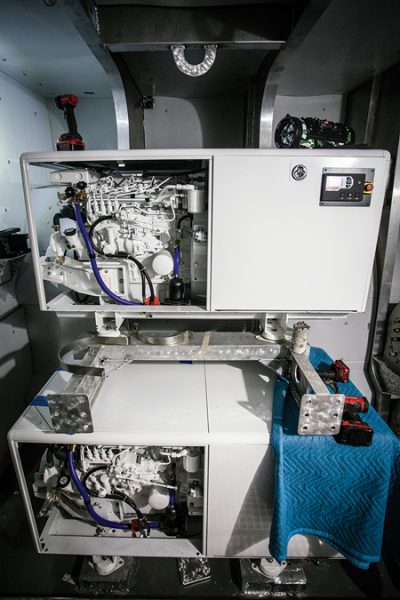
Two Northern Lights 38-kW gensets are the heart of H-2’s AC system, which also includes a 37-kW Atlas inverter to connect to shore power in foreign ports.
Much of the AC side was designed and specified by Ward’s Marine Electric in Fort Lauderdale, Florida, in cooperation with OceanPlanet Energy of Woolwich, Maine, and principal Bruce Schwab, who helped design and integrate the DC components. “Today there’s a big trend in the industry to use shore-power converters as inverters and superlarge lithium-ion battery banks to provide power, at least temporary power, for major loads like air-conditioning, chiller plants, and things like that,” said Ward Eshleman, chairman of Ward’s Marine Electric. “So, rather than using only smaller inverters and synchronizing them and stacking to get additional kW, the trend for the larger vessels is to use shore-power converters as inverters. There is an inverter bus in the main switchboard.”
True to its go-anywhere mission, H-2 was fitted with an Atlas 37-kW inverter to connect to shore power in places that do not serve 60 Hz, 240V single-phase power. “We can take anything from 90V to 400V and pretty much anything from below 50 Hz to the 60 Hz and single- or three-phase,” Herrin explained.
Eight GTX24V315A-F24 lithium-ion batteries from Lithionics are split between a house bank that can run all DC loads for at least 24 hours, and an emergency bank to operate critical DC loads—display screens, radios, nav lights—for 24 hours. The boat is equipped with 10 Solara Ultra-S 160W panels paralleled in two groups of five each, connected to two Victron SmartSolar MPPT 100/50 solar controllers to charge the house bank. Given enough sunshine, solar and battery power should be “capable of running lights and refrigeration but not air-conditioning or heating,” Schmitt said. “Since we will likely spend most of our time in the tropics, we did not believe that solar power alone could do the job we needed.”
OceanPlanet Energy specified four Victron Buck-Boost DC-DC converters, two for each engine, to help charge the house bank from the starter batteries without having to modify the engines’ stock alternators, which would have voided the warranty. “The converters activate based on the input voltage from the starting batteries,” Schwab explained. “With lower rpm, the alternators would not produce enough current to feed both converters without the starting-battery voltage dropping, turning the converters off. Then the voltage will rise, the converters turn on again, drop the voltage, turn off…over and over. Staggering the input voltage cut-in, hopefully starting the converters one at a time, will more smoothly supply power to the house bank across the engine/alternator rpm range.”

OceanPlanet Energy specified the DC system including DC/DC converters and hefty battery banks to power house loads and critical electronics.
There are two 4,500-watt 240V split-phase engineroom-ventilation fans connected to two Victron Quattro 5-kW 24V inverter-chargers configured for 240V/120V split-phase AC loads. They can accept AC inputs from two sources (shore power or generators) and automatically connect to the available source. “In the event of a grid failure or power disconnect, they take over the supply to the connected AC loads by inverting from the Lithionics house-battery bank,” Schwab said.
“It’s more complicated than that,” according to Herrin. “Typically, we’re going to be operating with the A-bus and the B-bus tied together, so we can power everything with one generator. The B-bus actually passes current through the Victron inverter-chargers on its way to the load. We have the ability to split the A-bus and the B-bus and run the A-bus on one generator and the B-bus on the other in the few instances we’re exceeding the capacity of one of the generators. If we lose both generators, then the essential loads are still going to be carried,” meaning engine vents or water pumps.
Redundancy and emergency backups also figured largely in the deliberations of John McKay, manager of the Switchgear Systems Division at Ward’s Marine Electric and point man for this project.
One of his challenges was limiting the voltage drop in the estimated 53 ‘ (16.2m) cable run between engines, which in an emergency allows the starboard engine to be started from the port battery and vice versa. “For a starter group, you can allow a 20% voltage drop,” McKay said and noted that starting the engines requires 720 amps, while the gensets needed only 200 amps. “I was keeping the 720-amp current between 7% and 11% voltage drop, getting up to some pretty good-sized copper. Some sections of the run were 240mm2 [500MCM] cable.” Knowing that the boat is capable of going to high latitudes, McKay recalled his youth and the frigid winter mornings in Massachusetts, “where you can crank a diesel all day long at a low rpm, and it’ll never start. You just need to turn it over one or two times at a higher rpm, and it’ll be running. So, I was making certain that the starter was going to crank at the highest rpm possible and not lose it all to voltage drop.”
Protecting Assets and Finishing the Job
No matter how fast or how far H-2 will travel, corrosion caused by galvanic current between dissimilar metals, by stray currents or by electric fault, is an enemy that needs to be kept in check. That’s the calling of Ted Schwartz, who runs Electro-Guard (Mount Shasta, California). He’s one of the country’s foremost experts on cathodic protection, and also served on ABYC’s E2 Cathodic Protection Project Technical Committee.
“We designed the system and supplied all the equipment and steered them through the installation,” Schwartz said. It’s a 15-amp impressed-current-cathodic-protection (ICCP) system, model 715 A-2, with three anodes and two reference cells. Regarding the boat’s Evolution shaft system with driveshafts running inside an oil-filled tube, Schwartz said: “It was a real challenge because you can’t actually make contact with the propeller shaft on the inside of the boat.” He consulted with Soundown and found a solution. “At the coupling on the inboard end of the tube, a bit of the shaft stuck out through the seal,” Swartz said. “There’s this coupling that Soundown built that fastens to the shaft, and we asked them to provide a surface on that coupling where we could put our silver slip rings on [to provide an electrical connection] to protect props and shafts.”
Every anode can deliver up to 5 amps of current using its own current controller that receives a signal from the main controller, which determines exactly how much current each anode will put out. The entire system consists of three anodes, three current controllers, the main controller, and a separate monitoring station connected to the controller by signal cable. Later, Schmitt also ordered a backup system employing aluminum sacrificial anodes.
On catamarans, the company installs a reference cell aft near the prop of each hull, and an anode on the aft section of each hull, and one anode amidships on the inboard side on one hull.

Chromate, two layers of epoxy, copious amounts of fairing compound, and various primers rendered the surface fair and ready for a yacht-quality paint job.
At the time of this writing, the vessel had been shot with chromate and two layers of epoxy before approximately 500 gal (1,893 l) of fairing compound and 325 gal (1,230 l) of various primers rendered the surface fair and ready for a yacht-quality Alexseal paint job with 35 gal (132.5 l) light ivory, 24 gal (91 gal) stark white, and 2 gal (7.6 l) cordovan gold. Parallel to the exterior, construction was on the home stretch with installation of the crew quarters and the saloon overhead. On the systems side, pressure checks were performed for hydraulics and plumbing.
Since H-2 is a much larger and more complex vessel than the original Hippocampus , with a multitude of systems that need to be managed, monitored, and maintained, I was curious how many crew Schmitt was planning to hire to help run his new boat. He said he consulted with captains and headhunters, and “the consensus is three or possibly four at most. I just completed my 100-Ton Masters and will build time on the new boat as well. We won’t charter and are not accustomed to being cooked for or served or having our beds made and all that. So mostly I’m looking for a qualified captain and engineer to maintain the systems.”
Little surprise that a hands-on operator like Schmitt does not want to cede too much of the game he loves to play. But as big, bold, and broad-shouldered as H-2 will be when she finally emerges from the old Gunboat shed in Wanchese, the proud owner is quick to remind anyone that it’s still “a vehicle to get the toys wherever.”
H-2 : The Designer’s View
H-2 ’s owner, the adventurous Brian Schmitt, has dived into deep caves to see submerged caverns, hand-fed large sharks that would normally view him as food, and spent years in his off-time exploring Caribbean archipelagos in Hippocampus, his current 19-year-old 57 ‘ (17.4m) power catamaran. Nearing retirement age, he gave the order for his “ultimate” yacht.

The foldable hydraulic deck crane to launch and retrieve a two-man electric submarine or an all-terrain vehicle required cutting a slot in the helicopter deck for the lifting bridle.
The first talk about the new design was between the owner, the builder, and me. As we discussed the mission of the boat, it became clear that it would fall into the category of expedition vessel with more guest staterooms, more range, and more room for equipment than his old boat. Brian defined the function of the vessel as a carrier for a 26 ‘ (7.92m) twin-outboard catamaran, an outboard skiff, a small car, and a small helicopter, which needed a flight deck. This vessel was to be used with family and guests while also serving as an operations base for outbound travel by air, land, or sea.
Aside from commodious accommodations, a key requirement was comfortable motion on rough seas. This was to be a catamaran, like his current boat, which offers extensive real estate afloat in a seagoing vessel. The only restriction for the new design was a beam no greater than 35 ‘ (10.6m) to fit the largest Travelift.
The trade-off for overall beam width involves room versus roll motion. A wider catamaran responds more quickly to roll in seaways but with less amplitude, whereas a narrower beam rolls more slowly with slightly more amplitude. The slower roll is preferable as long as overall roll stability is maintained. Roll in catamarans is unlike roll in single-hulled vessels. Because the vessel is supported by two buoyancy chambers (hulls) with distance between them, motion has little to do with roll inertia, but rather with response of the hulls to the seaway. Each hull responds to a passing wave independently by heaving (up/down) and rolling, which is a circular motion around the center of gravity (CG) that translates to lateral motion when standing above the CG, especially high up on the bridge. Power catamarans, unlike sailing catamarans, do not require wide hull spacing to generate righting moment (to support a sail plan), so they can have closer hull spacing, which still preserves sufficient stability, slows wave-response roll characteristics, and takes up less space in port.
One of the expected routes for this vessel is the Northwest Passage over the top of North America. Boats venturing there can expect floating ice, so we added thicker hull plating at the waterline and an ice-separation chamber on the cooling water intakes. We also designed the hull to give the propeller protection by positioning it behind a deep canoe-stern afterbody with no exposed shaft. A rudder horn, below the propeller extending aft from the hull, adds support for the rudder and protection for the prop. This configuration is useful as a hedge against the possibility of grounding. In fact, this boat can be careened on the beach between tides if necessary for repairs. The hull includes a strong, deep, vertical keel structure that allows for blocking anywhere along its length.
Speed and range became the largest determinates of the design. A maximum range of 4,000 miles at 15 knots (enough to cross the Atlantic Ocean) was proposed. Catamarans are easily driven at modest speeds due to lack of significant wave resistance by narrow hulls. A preliminary speed prediction analysis showed that we would be in the ballpark with about 1,400 hp (1,050 kW) and 5,000 gal (18,925 l) of diesel per hull. The final installed fuel capacity is 12,500 gal (47,313 l).

The general arrangement plan shows crew quarters in the hulls, three guest cabins, office, saloon, and galley on the main deck and owner’s suite on the bridge deck level.
A totally new design normally goes through a lengthy proposal and critique cycle between designer and client, especially if the client is knowledgeable and involved. The vessel’s first iteration started at 90 ‘ (27.43m) LOA, but it became evident that it needed more length to relieve a number of ills. After adding 10 ‘ (3.05m) we saw improvements, but it wasn’t until the 110 ‘ (33.5m) length proposal that we felt all the requirements had been satisfied: more slender hull shape, more open interior space, and better placement of machinery and tankage. The flight deck for the helicopter became larger, and the forward superstructure fairings gave the boat a sleeker look. And at 110 ‘ we achieved an efficient length versus waterline beam ratio that reduced wave drag and fuel consumption at the target cruise speed.
While beam remained at 35 ‘ , lightship displacement increased significantly to 230,000 lbs (104,190 kg). Accommodations now include crew quarters for four persons in the bows; three double guest cabins and a ship’s office forward; a large saloon amidships with adjacent galley, and a dive and a storage locker aft on the main deck. The upper deck is arranged with a full-width-bridge steering station forward, protected by a Portuguese bridge, and a master stateroom with en suite bathroom aft. The flight deck extends aft of the master stateroom. Access to the upper deck is by either a staircase from the foredeck, an interior staircase adjacent to the ship’s office, or by stairs from the starboard side deck.
The largest variable weight on the boat is fuel, so the tankage is located amidships to minimize its influence on trim. Engine and machinery rooms aft of the tankage take up the remaining spaces all the way to the transoms. Other amenities include a utility area aft of the crew quarters port side with storage and washing machines, and a walkway through the tank spaces and enginerooms to the boarding decks at each transom. Another late addition is the flying bridge to aid with shallow-water operation by improving the vantage point to see coral heads and other obstructions. Its protective bimini serves as a mounting platform for lights and antennae.
—John R. Marples
Read more Construction , Design , Drawing Board , Yards articles
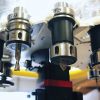
- CNC Construction on the Rise
How computer-aided design and software-controlled manufacturing technologies have reshaped custom and semi-production boatbuilding.

Hull Vane: A Wing With Benefits
Typically, military ships are designed and built for specific missions, not to curb their carbon footprint. However, if the Dutch navy serves as an example, that is about to change…. Read more »

Reid Bandy, the Carbon Minimalist
Reid Bandy designs and builds a stripped-down superefficient carbon fiber sportfisherman.

Recent Posts
- How Australia II Got its Wings Part 2: Finding Truth in the Tank
- How Australia II Got Its Wings Part 1: Prelude to a Controversy
- Learn Electrical Systems from Nigel Calder
- PRO-SET Epoxy Named an Official Supplier for New York Yacht Club American Magic, Challenger for the 37th America’s Cup
- Companies (82)
- Construction (105)
- Design (156)
- Drawing Board (8)
- Education (24)
- Environment (15)
- Events (20)
- Materials (48)
- Obituary (17)
- People/Profiles (46)
- Products (16)
- Propulsion Systems (30)
- Racing (15)
- Repair (37)
- Rovings (313)
- Short Cuts (3)
- Sponsored Partner News (13)
- Systems (80)
- Task Sheet (1)
- Uncategorized (28)
- Wood to Glass (7)
ProBoat.com Archives

- Subscribe Now
- Digital Editions

Best power catamarans: 6 of the best models on the market right now
- Top stories
Power catamarans have become so popular in recent years. Alex Smith talks us through 6 of the most exciting models we've covered in the past 12 months...
With the promise of extra volume stability and running efficiency it’s easy to see why power catamarans have become so popular in recent years.
Established players like Sunreef , Leopard and Lagoon have been joined by new builders like Vandal, Archipelago and Moon Yachts.
Big brands like Prestige have also made them move into twin hulled motorboats in recent years, and the likes of Bluegame and Wider Yachts look set to follow suit.
So with the trend showing no signs of slowing here’s our round-up of some of the most exciting new power catamarans you can buy right now.
Article continues below…
Prestige M48 sea trial review: The smartest multihull on the planet?
Moon power 60 review: is this £3.7m adventure cat the next big thing, 6 of the best power catamarans available right now.

Prestige M48
Prestige’s first ever power catamaran is designed to provide the volume of a 60 footer alongside the running efficiency of a 40 footer, but the way it manages all that onboard space is also quite attractive.
A three-part aft swim platform features a raising central section to help extend the cockpit party out over the water. The foredeck mimics that with freestanding furniture right at the forepeak and between them the saloon includes a big-aft galley, a large port lounge and a compact helm with a handy starboard side door.
From here private stairwells to the forward owner’s cabin and each of the two guest cabins provide plenty of privacy, and the split design of the port ensuite means it works really well as a day head.
In terms of styling the freestanding bow furniture looks a bit odd, and in terms of dynamics the stooping bridge deck does tend to touch down when the swells get beyond a couple of feet.
But if you want an accessible, novice-friendly boat that provides a party platform way out of proportion to its length, the first model in Prestige’s M line has a lot going for it. And if you have the budget, the more recent Prestige M8 is an even more convincing piece of work.
Watch our full sea trial review of the Prestige M48

Moon Power 60
As a modified sailing cat, the Moon Power 60’s beam stands at a massive 53% of its overall length and that has a very clear impact on the inside.
In spite of huge side decks with dual access to the flybridge , the internal saloon occupies an enormous footprint. It’s used for a pair of peripheral seating areas plus a forward door to access a lovely sunken bow lounge.
Visibility from the lower helm is restricted by the big stuts that sit sailboat-style toward the centre of the screen, but performance is pretty impressive: a pair of 3,500L tanks give you a 2,000nm range at 8 knots with a fuel flow of just 3lpm, and if you really want to boost the range there’s plenty of space for extra fuel capacity too.
Up on the flybridge there’s a big symmetrical lounge and a hot tub flanked by sunbeds, and down below the two hulls borrow a bit of inboard space for four ensuite cabins.
The simplistic saloon arrangement, the absence of a day heads, and the sheer masculinity of that styling might prove a bit problematic for some, but if you’re okay with a modified sailing cat, and you’re happy to work with the yard to refine that deck layout, this big imposing long-distance boat is unlike anything else out there.
Watch our full sea trial review of the Moon Power 60

Invincible 33
Invincible is a well-respected American Builder with a strong offshore sports fishing heritage and close links with the US Navy, but it also builds high-performance power catamarans, and this impressive 33-footer is the entry point to that fleet.
It uses quite a narrow beam with asymmetrical chines and spray rails, which enable it to heel into a turn in much the same fashion as a monohull and to ride the chop without spitting clouds of spray over that bow.
Capable of 56 knots with twin 400hp Verado outboards , it can also reportedly achieve cruising economy of just 2.5lpm for a range of around 500nm.
The internal arrangements are also really practical – with high capacity deck drains and an automatic fresh water flushing system for the outboards you can simply hose this boat down after a trip and get on with your day.
The fuss-free fit out includes multiple bait wells as well as lots of drained, insulated lockers that do a great job as ice chests and storage spaces, and the squared off bow provides lots of seating to supplement the big open deck of that half cockpit.
It might be built with fishing in mind, but as a rapid offshore performance machine, this might just be the perfect power catamaran for monohull lovers.
Watch our yacht tour video of the Invincible 33

Archipelago 47
The Archipelago 47 is a seriously good looking boat. Built from aluminum on the Isle of Wight with design input from commercial specialist Chartwell Marine, its low roofline, reverse screen, wide beams, slender forward hulls, and raised bridge deck give it a seriously potent profile, and that’s precisely what this boat is all about.
The idea is to deliver proper long distance offshore performance alongside a handy turn of pace in a homely fit out, and the Archipelago delivers that.
Built from 8mm hull plating with 6mm topsides, this Category A boat is rated to carry 12 people and sleep up to eight people in four cabins.
Reserving one entire hull for the owner’s suite is a really attractive option, but in all cases headroom is great and huge vertical picture windows provide amazing views from bed level.
The saloon features a large galley and lounge, as well as a raised helm with a shut-off partition for night nav. There are still some design tweaks required, particularly at the helm and the aft end, to maximise this boat’s potential, and if you want a flybridge you’ll need to look toward the Archipelago 52 instead, because on this particular boat that’s not an option.
But with space up top for all kinds of expedition friendly tenders, toys, cranes and solar panels, this tough go anywhere power catamaran has plenty going for it.
Watch our full sea trial review of the Archipelago 47

Vandal Explorer
As a foil-assisted, outboard-powered, flybridge equipped, aluminium power catamaran, the Vandal Explorer is certainly not the mainstream choice, but of course it was never designed to be.
Created by Ben Mennem, who wants to enjoy the sun-drenched waters of the Med, in collaboration with Norwegian designer Espen Oeino, who loves outdoor adventures in the Nordic States, it seems to straddle both camps.
It uses a wide open main deck with skeletal bars rather than rigid bulkheads to keep you properly in touch with the sea. There’s also a big aft platform between the Verado XTO outboards, which operates as a passerelle, and thanks to a ladder and rain shower does a great job for watersports too.
Ahead of the cockpit lounge there’s a big transverse galley tucked inside the shelter of the pilothouse structure, and there’s also a raised full-beam bow cabin with a separate incinerator toilet.
It’s a bit noisy on that main deck when you’re underway and the limited two-berth arrangement of the base boat is likely to compel some people to question its overall practicality.
But as a tough and lightweight 40-knot boat with space for 14 people, a cool off-grid aesthetic and all the custom friendly flexibility you could want, its simplicity is actually a really key part of its appeal.
Watch our full sea trial review of the Vandal Explorer

The Aquila 44 is a proper wide-beam cruising cat
Built at Sino Eagle’s 1million sqft facility in China and developed in collaboration with the renowned J&J Design Group, Aquila is a specialist power catamaran builder and that absolutely shows.
Capable of up to 20 knots with the top rated Volvo Penta D4 420s, the Aquila 44 uses bow bulbs for extra waterline length, a softer ride and improved stability at displacement speeds.
But is the way it uses its 21ft beam that really impresses. In the aft cockpit a convivial c-shape dinette sits opposite a fold-out bar at the aft galley.
At the bow a set of steps connects the foredeck lounge directly to the flybridge, which is great for practicality as well as for large partie, and up top a central walkaround helm pod keeps things more sociable and inclusive than on any other boat in this class.
There’s a proper main deck helm too if you want it, plus sleeping for six in three private ensuite cabins, including a brilliant owner’s cabin that occupies the full beam beneath that foredeck.
If you need extra performance and style you could of course look toward the brand’s smaller, narrow-beamed, outboard-powered sport line, but for proper power catamaran lovers this big, cleverly arranged entertainment platform feels exactly right.
Watch our yacht tour video of the Aquila 44
New Fjord F480 first look: 40 knot capable 47 footer
Navan s30 & c30 tour: exceptional new axopar rival, axopar 29 yacht tour: exclusive tour by the man behind it, latest videos, galeon 440 fly sea trial: you won’t believe how much they’ve packed in, parker sorrento yacht tour: 50-knot cruiser with a killer aft cabin, yamarin 80 dc tour: a new direction for the nordic day cruiser.
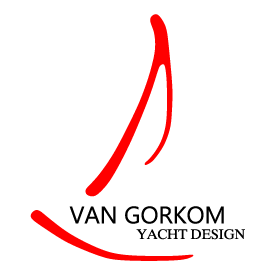
- Racing Sail Boats
- Racer/Cruiser Sail Boats
- Cruising Sail Boats
- Power Boats
- Super Yachts
- Refits & Restoration
- Composite Solutions
- Metal Works
- Performance Analysis
- Forensic Engineering
- Appendage Refits
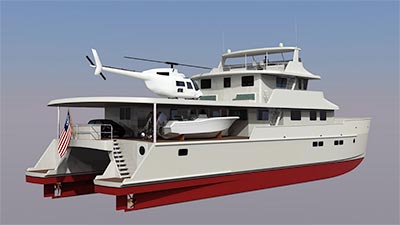
Project Detail
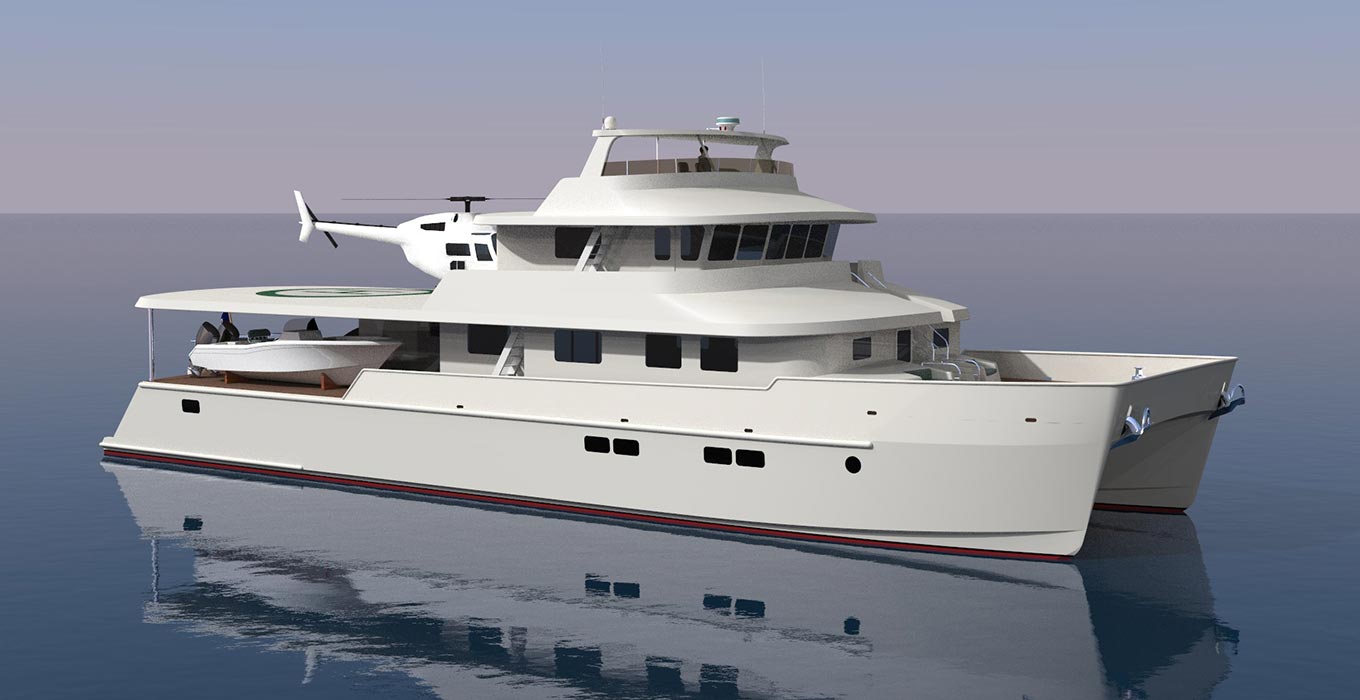
Request More Information
" * " indicates required fields
Design Criteria
H2 is a handsome 33.5 meter aluminum power catamaran designed by Marples Marine and is being built by Catman Cats. It has been conceived for both luxury cruising and long-range expeditions to remote areas of the world including ice belt regions.
The twin hulls will provide an incredibly stable and comfortable platform for passengers and crew, while the slender hull forms are designed for maximum fuel efficiency and to reduce wave making drag. The 5 foot draft will allow the vessel to enter most anchorages and the high underwing clearance is designed to allow full speed operation in moderate sea conditions with a full load.
Construction of an Aluminum Power Catamaran
Van Gorkom Yacht Design was brought into this project to engineer and detail the yacht’s structures . All structural components, plating, frames and foundations have been modelled in 3D so as to precisely gauge their geometry for the cutting files sent to the mill. This has allowed the builder to efficiently erect and weld up the structure months ahead of the building schedule. The model has also been key in accurately determining overall construction weights and their distribution.
H2’s robust construction has been engineered for potential operations in moderate ice conditions with the emphasis on extra framing and strengthened ice belts. It will be of aluminum plate (alloy 5083-H32) and extruded shapes (alloy 6061-T6). All scantlings, materials and weldment will be sized to comply with the American Bureau of Shipping’s (ABS) ‘Motor Pleasure Yachts’ design guidelines 2016. Construction of the aluminum power catamaran began in September, 2017.
Passenger Accommodations
The 4-deck arrangement includes one owner’s stateroom, three guest cabins, and accommodations for four to six crew members. The three tastefully appointed guest cabins on the main deck have queen size beds, private bathrooms, and are accessed from the main passageway connected to the salon area and foredeck. There is also a study/library with a head attached.
The spacious aluminum power catamaran’s salon features full-height “aquarium” windows offering spectacular views on the port side, and a double-door walk-out onto the main deck on the starboard side. The adjoining gourmet galley and bar area is fully equipped with a refrigerator and bottom load freezer, a restaurant-style stove, a dishwasher, a trash compactor, a microwave/convection oven, and a wine cooler.
Access to dive locker/equipment room, aft of the salon, is from the aft main deck. This area also features a stowable dining table for ten and a fully integrated barbecue unit with a refrigerator and storage space. Exterior port and starboard stairs lead down to the swim platforms and transom access to the hulls.
The upper deck consists of the helideck and pilot house, which includes a master stateroom, bridge and day-head. The generous master cabin has a queen bed, his-and-hers (walk-in) closets, a chest of drawers, an entertainment cabinet, and a spacious en-suite bathroom. The well-equipped bridge has ample room for the crew and guests. Optional wing station controls are fitted on the Portuguese bridge. The fourth level, partially covered flybridge offers a 360 degree field of vision.
Access to the crew quarters located in the hulls will be from the main deck cabin area and through the watertight transom door that opens to the swim platform. The crew’s quarters will have three staterooms, a crew galley and dinette and two crew bathrooms. Air conditioning will be provided in all enclosed areas including machinery spaces.
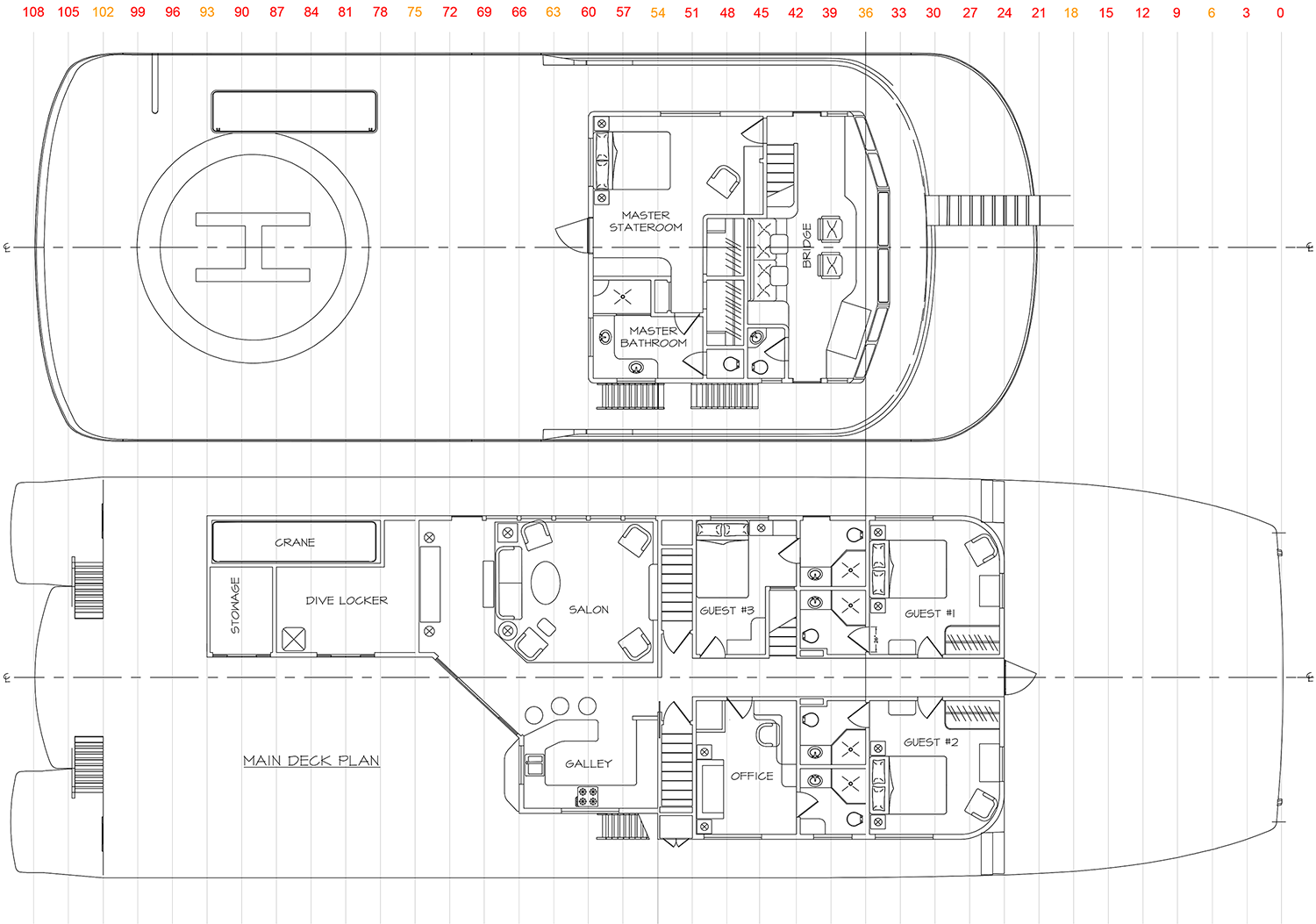
Performance
In order to achieve a high level of confidence in the choice of power plants and propellers for H2, Marples Marine contracted HydroComp, Inc. to perform an in-depth analysis of the vessels hydrodynamic and performance characteristics. Using advanced modeling software they were able to develop a set of resistance and power curves that closely described the required propulsion system criteria, and facilitated the propulsor design.
Additionally, an analysis was made of existing aluminum power catamaran designs and other published data which gave conformation to the intended speeds and power ranges. The designers have high confidence that the quoted speeds will be met with the installed power for the displacement of the vessel. During the final design phase, the speed and power prediction effort will continue to be monitored.
The eventual choice of engines was the MTU V2000-M96 marine diesel engine running at about 75% rated horsepower for a nominal cruise speed of 15 to 18 knots. A long range cruise speed of 13-15 knots will provide an estimated range of 4800 Nm assuming normal consumption rates. The boat speed at full power is estimated to be 20-22 knots. The power trains will feature thrust bearings and anti-vibration components. The propellers will be 36” diameter 5 blades wheels. There will also be fore and aft thrusters for maneuvering.
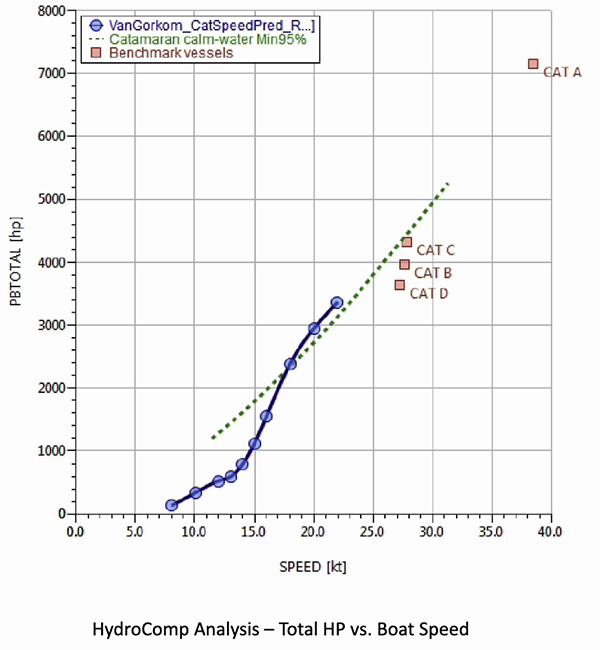
Outfitting an Aluminum Power Catamaran
H2 will be designed for a standard of construction and outfitting consistent with the owner’s specifications and guidelines of the American Boat and Yacht Council (ABYC), National Fire Protection Association (NFPA), American Bureau of Shipping (ABS), and the Code of Federal Regulations (CFR) where appropriate.
Safety equipment will comply or exceed with ABYC standards, which provides guidelines for pleasure vessels. This will include portable fire extinguishers in all passenger areas, manual and automatic fire control systems in all machinery and tank spaces, including the helideck. Bilges will be fitted with manual and automatic pumping systems along with high water bilge alarms.
House power will come from two 20kw generators producing 110 volts and 240 volts and charging a series of house and starter batteries. H2 will have twin anchoring systems with electric powered windlasses. Two windlasses on the after deck will assist with docking procedures.
Fuel tankage will be integral and meet the guidelines of the ABS. Waste and waste oil tanks will be separate and have deck pump-out fittings. Potable water tanks will be separate and be fed by deck fittings and water makers.
H2 will carry an 8 meter long deep-V tender with twin 150hp outboard motors. This will be stowed on the main deck and launched with twin retractable davits. This vessel will also carry a 4 meter RIB powered by a 35hp outboard that will be stowed in chocks on the helideck. A compact car, ATV or snow mobile can be loaded onto the main deck with the crane that stows away neatly into the helideck. In addition, H2 will carry an R44 Robinson rotary wing aircraft launched from the helideck. Fixed wing amphibians can also be accommodated using the deck crane for launching.
As featured in Professional Boatbuilder – An Aluminum Expedition Catamaran – Professional BoatBuilder Magazine (proboat.com) .

Built for a lifetime
Aluminum boats built with every detail engineered, designed, and executed with dedication. ACI Boats builds welded aluminum catamarans and monohulls for recreational and commercial use. Our boats are built to last a lifetime.

We are founded on generations of boat building experience. ACI Boats is owned and operated by Cory Armstrong, and backed by a team of skilled craftsmen and women. When choosing a boat builder, quality and trust is everything– ACI boats delivers with a safe, and comfortable vessel that you can rely on.

Pybus Point Lodge is proud to announce the official launching of two brand new, catamaran style, fishing and touring boats from ACI Boats. This is the second time we’ve had the pleasure of working with ACI and once again, they exceeded our expectations. Since we run a premium fishing and adventure lodge, we don’t just have to worry about our boats being safe and functional–we also have to make sure that our boats have the style and comfort that our guests expect.
ACI Boats is thrilled to announce the official award of a $3 million dollar contract with American Samoa’s Departmant of Commerce for four “Super Alia” commercial fishing vessels. All four boats will be manufactured at ACI Boats’ facility in Port Townsend, WA. The vessels themselves will be 38’x14’ semi-displacement catamarans, designed by ACI Boats and Coastwise Marine Design. The first of the four vessels, to be completed in Fall/Winter 2022, will be used as a training platform for boat owners, captains, and deckhands. The following three boats, will be completed over the course of 18 months and will then be available for lease by the American Samoa Dept. of Commerce, intended to support the growth and safety of the local fishing fleet.
ACI Boats launches it’s first CatLander in it’s line of CatLander landing crafts. Built for the Jamestown Sklallam tribe in Washington State, the CatLander7500 will be used as a spill response support vessel by the tribe.

The best heavy gauge aluminum catamaran in it’s class!
- LENGTH OVERALL : 30′ Without Motors / Bow Pulpit
- HULL ENTRY : 50°
- TRANSOM DEADRISE : 16°
- BEAM : 11′
- BOTTOM : 107″
- TRANSOM : .250
- SIDES : 59″
- FUEL CAPACITY : 240 gallons
- DRY WEIGHT : 8920 lbs. Without Motors
- MAX HORSEPOWER : 600 hp.
- Reverse pilothouse Windshield Design
- Offshore Motor Bracket With Full Length Swim Step Platform and Welded Aluminum drain plugs
- Stainless Steel Fasteners Throughout
- Welded Bow Eye and Transform Eyes
- Welded Rope Cleats
- Over-built one piece, 3/8 thicker keel bar for superior keel strength, weld protection and boat life
- Limited lifetime hull warranty to the original purchaser
- High duality marine paint interior with clear coat, one color matching exterior marine paint with clear coat.
- Fully Welded Alaskan Bulkhead (optional)
- Sliding Cabin door
- Optional side entry sliding door
- Reversed Chines
- Welded self bailing deck
- Instrument panel with easy wiring access
- spare switches wired into the circuit breaker
- Aft battery tray with 3-way battery switch
- Navigation /Anchor lights
- High capacity bilge pump W/ float switch
- 12V Electrical outlet on dash
- Reversed windshield for superior visibility and increase room
- 360 degree walk around cabin design
- Large, oversized transform fish box (optional)
- (2) Large in deck fish boxes
- Walk through transform door
- Non extruded build, plate-plate Welded construction
- Full length side trays
- Cuddy area for marine head and storage
- 0 No item in your cart
- SUBSCRIPTION
- Classified Ads
- Technical Specifications
- Destinations
- Address book

- All the magazines
Archipelago 47 - An aluminum powercat for extreme programs
Article published on 19/01/2023
By Dick Sawyer
published in n°187 jan. / feb.
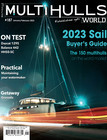
Built in aluminum and with ocean passagemaking capabilities, this new powercat built in the UK is perfectly suited for expeditions and cruising far from the beaten track.
Create a notification for "Power catamaran"
We will keep you posted on new articles on this subject.
The builder has taken great care to combine robustness and comfort - the interior is fitted out with the greatest of care and is even equipped with an underfloor heating system, contrasting with the “utilitarian” appearance conjured up in large part by the forward windows whose slope is reversed. Another very “professional” detail is that the interior helm station can be blocked off, so a night watch can be properly maintained even with the lights remaining on in the saloon. Note the large trampolines up front, now a very atypical feature aboard a powercat. Our only one regret with the deck plan is that there are no footbraces (much less any sort of bulwark...) on the side decks. The nacelle remains very open to the cockpit - the latter, decked with synthetic teak and its after end becoming a neat aft platform. A large part of the coachroof is taken up by a roof rack, which is very practical for carrying kayaks or paddleboards for example. Generously powered (840 HP in total for a lightship displacement of 17 tons), the Archipelago 47 is capable of reaching a maximum speed of 25 knots. The builder also offers hybrid and electric propulsion systems and will soon be designing other models with the aim of creating a complete range. Builder: Archipelago Yachts Length: 47’5” (14.45 m) Beam: 21’3” (6.48 m) Draft: 3’9” (1.14 m) Light displacement: 37,475 lbs (17 t) Maximum speed: 25 knots Fuel: 528 US gal (2,000 l) Water: 264 US gal (1,000 l) Range: 3,000 nautical miles Engine: 2 x 420 HP Iveco Price: from £1,200,000 ex-tax
www.archipelago-yachts.co.uk
Tags :
- Power catamaran ,
- Archipelago 47 ,
- Archipelago Yachts
Did you like this article ?
Share this article
Most-read articles in the same category.
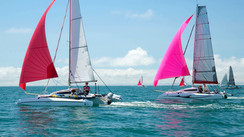
Astus Boats Club - Ask for the 2024 program!
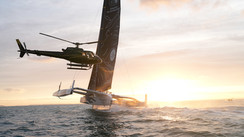
Arkea Ultim Challenge - Brest: Charles Caudrelier's coronation aboard his Maxi Edmond de Rothschild
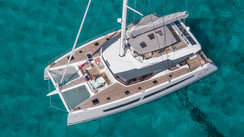
Alegria 67 - A Jacuzzi at La Grande-Motte?
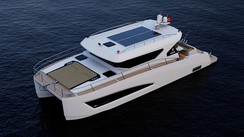
Discovery 40 - A sedan built in Turkey
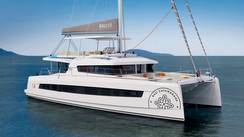
Bali 5.8 - The new flagship of the range
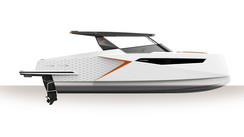
Dracan 42 - Another manufacturer on the powercat market!
What readers think.
Post a comment
No comments to show.
Useful links
- Charter a Archipelago 47 ,
- Purchase a Archipelago 47 secondhand ,
- Classified ads Archipelago 47 in secondhand multihulls ,
- Discover Archipelago Yachts and their Archipelago 47
Follow us on
Vous avez ajouté " " à vos favoris., vous avez supprimé " " de vos favoris., in order to add this article to your favorites, please sign in..

IMAGES
VIDEO
COMMENTS
Find Power Catamaran Aluminum boats for sale in your area & across the world on YachtWorld. Offering the best selection of boats to choose from. ... 2018 Custom Power Catamaran. US$554,032. ↓ Price Drop. US $4,335/mo. World Wide Boat Brokers | Buddina, Queensland. Request Info; 2020 Herley Electric 3400. US$453,289. US $3,547/mo.
Power-aluminium-fish. Aluminium Fish. Power-antique-and-classic. Antique and Classic. Power-barge. Barge. Power-bass. Bass. Power-bay. Bay. Power-bowrider. Bowrider. ... Power Catamaran boats for sale on YachtWorld are available in a range of prices from $37,160 on the more modest side up to $11,294,892 for the rarest of yachts. Remember the ...
Built in Alaska. Alaskan Aluminum Power Catamarans specializes in the design and building of aluminum, hydrofoil assist, outboard powered catamarans; producing a welded aluminum boat specifically designed for operating in our rugged Alaskan environment. Each of our boats is influenced by a lifetime Alaskan resident who has spent most of his ...
Three all-aluminium premium luxury power catamarans make up the StellarCAT family : AL2002 with an overall length of 20.72m (68 ft) AL2502 with an overall length of 25.12m (83 ft)
An ideal ocean-going explorer power catamaran for worldwide blue water cruising and circumnavigation. The hulls, deck, deckhouse and the entire structure are made of certified aluminium. ... Dijkstra is certified by "Germanischer Lloyd" and "Bureau Veritas" and has already built more than 180 aluminium catamaran yachts and commercial vessels ...
The SilverYachts SilverCat 22M is an all-aluminum power catamaran notable for its 20-knot performance, open layout and well-defined indoor and outdoor social spaces. Courtesy Viken Group. By now, the boating world at large is aware that power catamarans have found an ever-growing fan base; they're not just a trend. SilverYachts is looking to ...
ArrowCat Power Catamarans. The Outboard Powered Express Cruising Catamaran. ArrowCat Express Cruisers are designed from the ground up to maximize comfort, performance, durability, and fuel efficiency, making them a better choice for both in-shore and off-shore family cruising. We build our powercats with your safety and enjoyment in mind ...
Whether you're looking for a silent electric boat or speeds of over 26 knots, our custom catamaran aluminium yachts offer ultimate flexibility in power and fuel efficiency. And with advanced hull forms and superior bow height, you'll enjoy comfortable sailing even in seas exceeding 1.75m. Embark on a journey of a lifetime with a custom ...
Power Catamarans have been growing leaps and bounds in popularity, and, in lengths and widths. And for good reason. ... catamaran hull form constructed from aluminum and composite materials. She is 60 feet LOA with a 17-foot beam, and has a relatively shallow 1-foot draft. Powered by quad Yamaha 300 hp outboards, she can reportedly reach 50 ...
The Sea Speed Pty Ltd, design team headed by Paul Birgan design aluminium power catamarans from 6 to 60 meters for pleasure and commercial use. We have many of our Sea Speed designed aluminium catamarans around the world currently in operation, including Catamaran Passenger Ferries, Catamaran Dive Boats, Cruise vessels, Catamaran Crew Boats ...
ABOUT BRIX MARINE. has earned a solid reputation for pioneering and crafting the world's most rugged aluminum catamarans and workboats since 1991. The company was founded in Canada and moved to Port Angeles, WA in 2001. We gained new ownership under Bryton Marine Group in 2017, which fortified the company's focus on our Core Values and ...
These powerboats use the following propulsion options: outboard engine. There are a wide range of Power Catamaran boats for sale from popular brands like World Cat, Aquila and Twin Vee with 533 new and 701 used and an average price of $457,008 with boats ranging from as little as $18,176 and $7,244,759.
An Aluminum Expedition Catamaran. With 110′ LOA, a 35′ beam, and 45′ (33.5m, 10.6m, and 13.7m) of bridge clearance, the H-2 catamaran seeks to make a case for U.S. custom boatbuilding. Hauling toys beyond the horizon is the raison d'être for a rugged go-anywhere catamaran designed and built in the U.S., a notable exception in the world ...
Prestige M48. Prestige's first ever power catamaran is designed to provide the volume of a 60 footer alongside the running efficiency of a 40 footer, but the way it manages all that onboard space is also quite attractive. A three-part aft swim platform features a raising central section to help extend the cockpit party out over the water.
H2 is a handsome 33.5 meter aluminum power catamaran designed by Marples Marine and is being built by Catman Cats. It has been conceived for both luxury cruising and long-range expeditions to remote areas of the world including ice belt regions. The twin hulls will provide an incredibly stable and comfortable platform for passengers and crew ...
Power Catamaran boats for sale on Boat Trader are available within an assortment of prices from a reasonable $18,851 on the more accessible end all the way up to $7,654,160 for the most luxurious crafts. While shorter, more affordable utility models may have engines with as little as 70 horsepower on them, models with the most power can have ...
Power cruising multihull boats are one of the fastest-growing segments of the recreational boating market. From multihull center-consoles to mid-size catamaran cruisers, and from large high-speed sport-fishing catamarans to luxury multihull motor yachts, the advantages of multihull vessels are being appreciated by a growing audience.
Photo via World Cat Boats. World Cat is one of the most recognizable brands in the world of power catamarans — in fact, according to the company they're the largest producer of power catamarans in the world. Their line is a mix of center console and dual console fishing and family boats ranging from 23' to 40'.
All four boats will be manufactured at ACI Boats' facility in Port Townsend, WA. The vessels themselves will be 38'x14' semi-displacement catamarans, designed by ACI Boats and Coastwise Marine Design. The first of the four vessels, to be completed in Fall/Winter 2022, will be used as a training platform for boat owners, captains, and ...
Offshore Motor Bracket With Full Length Swim Step Platform and Welded Aluminum drain plugs; Stainless Steel Fasteners Throughout; Welded Bow Eye and Transform Eyes; Welded Rope Cleats; Over-built one piece, 3/8 thicker keel bar for superior keel strength, weld protection and boat life; Limited lifetime hull warranty to the original purchaser
Power catamaran Archipelago 47 - An aluminum powercat for extreme programs News. Archipelago 47 - An aluminum powercat for extreme programs. ... Create a notification for "Power catamaran" Votre e-mail doit être valide. The builder has taken great care to combine robustness and comfort - the interior is fitted out with the greatest of care and ...
Scheduled to debut at the Miami International Boat Show in February, it is an evolution of the Leopard 51 Powercat, with more than 135 of those sold, according to Leopard Catamarans. The builder projects a top speed from a pair of 370-hp Yanmar 8LV diesels at 25 knots, with a cruising speed of 17.5 knots.
Power-power-catamaran. Power Catamaran. Power-rigid-inflatable-boats-(rib) Rigid Inflatable Boats (RIB) Power-runabout. Runabout. Power-saltwater-fishing. ... 2022 Custom 50 Feet Aluminium Catamaran. US$860,239. ↓ Price Drop. US $6,732/mo. Bach Yachting International | Dalmatia, Croatia. Request Info; 2018 JFA Yachts Long Island.